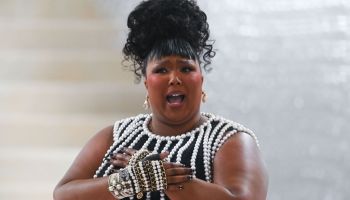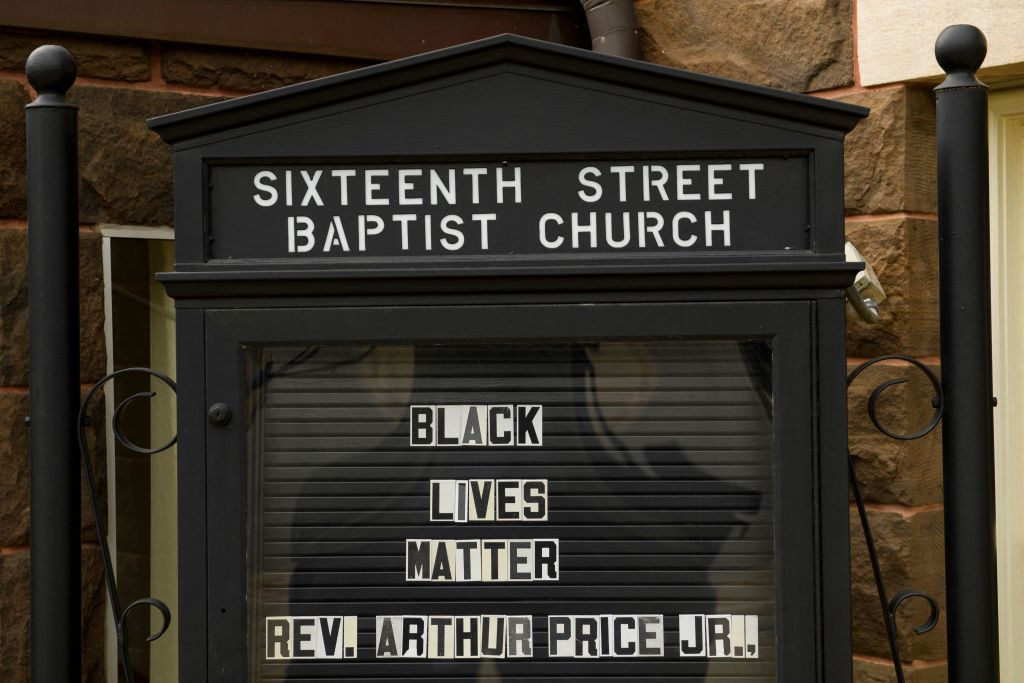
A sign reads “Black Lives Matter” at the 16th Street Baptist Church, a Civil Rights historical site where four young girls were killed in a Ku Klux Klan bombing in 1953, on March 27, 2021, in Birmingham, Alabama. | Source: PATRICK T. FALLON / Getty
UPDATED: 12:30 a.m. ET, Sept. 15, 2022
Originally published Sept. 15, 2018
Friday marked the 60th anniversary of white supremacists’ deadly bombing of the 16th Street Baptist Church in Birmingham, Alabama. The act of terror by four members of the KKK at the historic Black church killed four little girls: Addie Mae Collins, Carole Robertson, and Cynthia Wesley, all 14, and Denise McNair, 11. Nearly two dozen others were injured in the blast that used dynamite.
“Sixty years ago, on Sept. 15, 1963, four white terrorists bombed a church in Birmingham, Alabama, and killed four Black girls. Had they lived, Denise McNair, Cynthia Wesley and Carole Robertson would have been 71 by now. Addie Mae Collins would have been 74,” Duke University historian Adriane Lentz-Smith said in a statement. “Instead, they remain 11 and 14 forever, enshrined as ‘Four Little Girls,’ in the Spike Lee documentary of the same name and in civil rights histories that trace how much blood was spilled trying to convince Americans in the 1960s that Black lives matter.”
Sarah Collins Rudolph, a bombing victim who lost an eye from the explosion, previously told the Associated Press that she blames the segregationist Alabama Gov. George C. Wallace for inciting the violence on that fateful day.
“If they hadn’t stirred up all that racist hate that was going on at the time I don’t believe that church would have been bombed,” Rudolph said.
Former Sen. Doug Jones, who successfully prosecuted two men for the bombing decades ago, recounted the case earlier this year while working as the Jerome Lyle Rappaport distinguished visiting professor at Boston College Law School.
“It is history because what happened in Birmingham, and particularly on September 15, 1963, was one of those real horrific acts of the civil rights era,” Jones recalled. “It is part of Birmingham’s history, but more importantly, it’s part of America’s history.”
Following the Birmingham Church Bombing, the community reacted by staging a protest, which resulted in a violent reaction from police.
The church was a frequent meeting place for prominent civil rights leaders and leading Black voices, including Martin Luther King Jr. In fact, it was those fateful series of events that helped prompt King’s famous Letter From Birmingham which stated “his decision not to call off the demonstrations in the face of continued bloodshed at the hands of local law enforcement officials,” History.com reminded readers.
President Barack Obama would go on to sign a bill awarding the four young victims of the tragic 1963 Birmingham church bombing with the Congressional Gold Medal.
Barbara Cross, a friend of the girls who survived the church bombing, once recounted to TIME how close she was to possibly being the fifth person killed.
“I will never stop crying thinking about it,” said Cross, who was 13 at the time.
The last surviving bomber was denied parole in 2016 and remained in prison for his role in the mass murder.
Keep scrolling to see vintage images paired with more recent photos from the bombing, its violent aftermath and resulting protests demanding justice.
The post 16th Street Baptist Church Birmingham Bombing Photos, Then And Now appeared first on NewsOne.
16th Street Baptist Church Birmingham Bombing Photos, Then And Now was originally published on newsone.com
1. Men Searching Wreckage of Burned Building
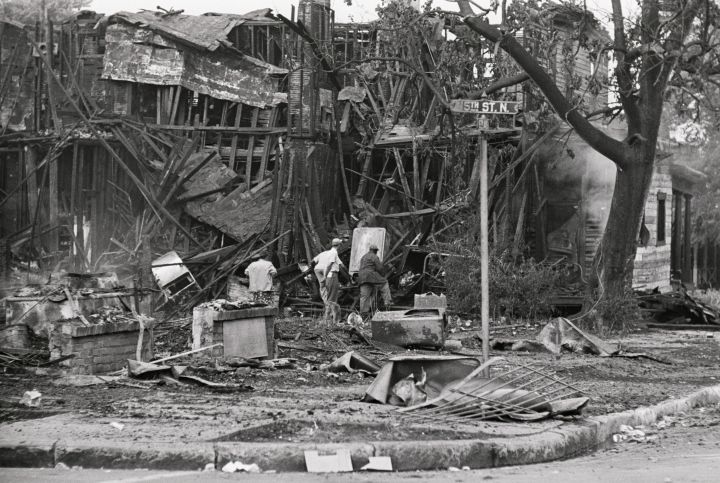 Source:Getty
Source:Getty
Men search through the ruins of building burned during a fire in Birmingham, Alabama sparked by racial tension.
2. Birmingham Cityscapes and City Views
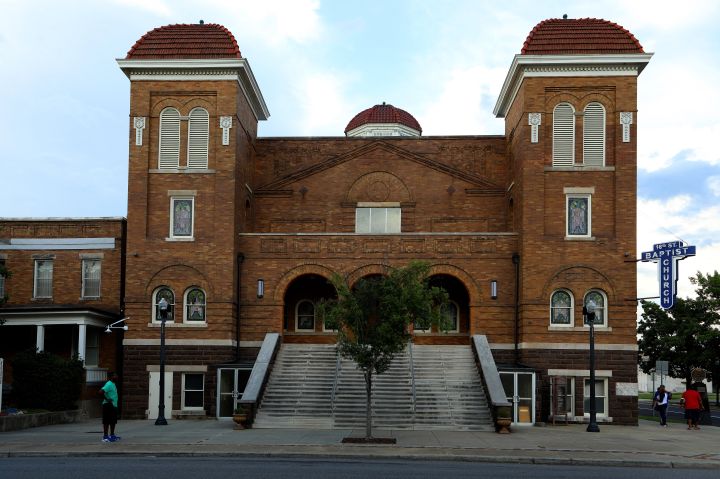 Source:Getty
Source:Getty
Street Baptist Church, site of the September 15, 1963 Church bombing in Birmingham, Alabama on July 5, 2018. (Photo By Raymond Boyd/Getty Images)
3. Bomb-damaged trailers at the Gaston Motel, Birmingham, Alabama
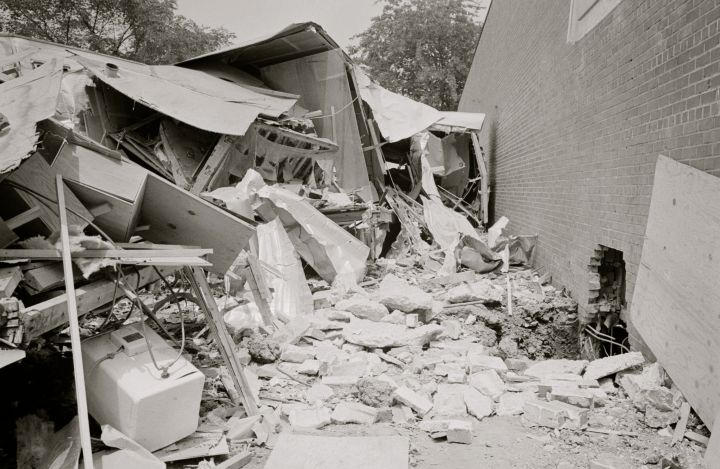 Source:Getty
Source:Getty
CIRCA 1963: Bomb-damaged trailers at the Gaston Motel, Birmingham, Alabama (Photo by Buyenlarge/Getty Images)
4. Bomb-damaged home of Arthur Shores, NAACP attorney
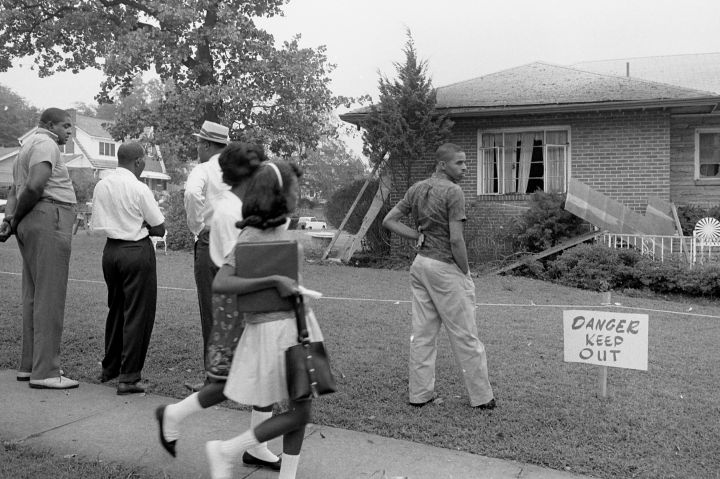 Source:Getty
Source:Getty
CIRCA 1963: African Americans viewing the bomb-damaged home of Arthur Shores, NAACP attorney, Birmingham, Alabama (Photo by Buyenlarge/Getty Images)
5. ‘Bombing is a profession,’ James Meredith told a Denver audience
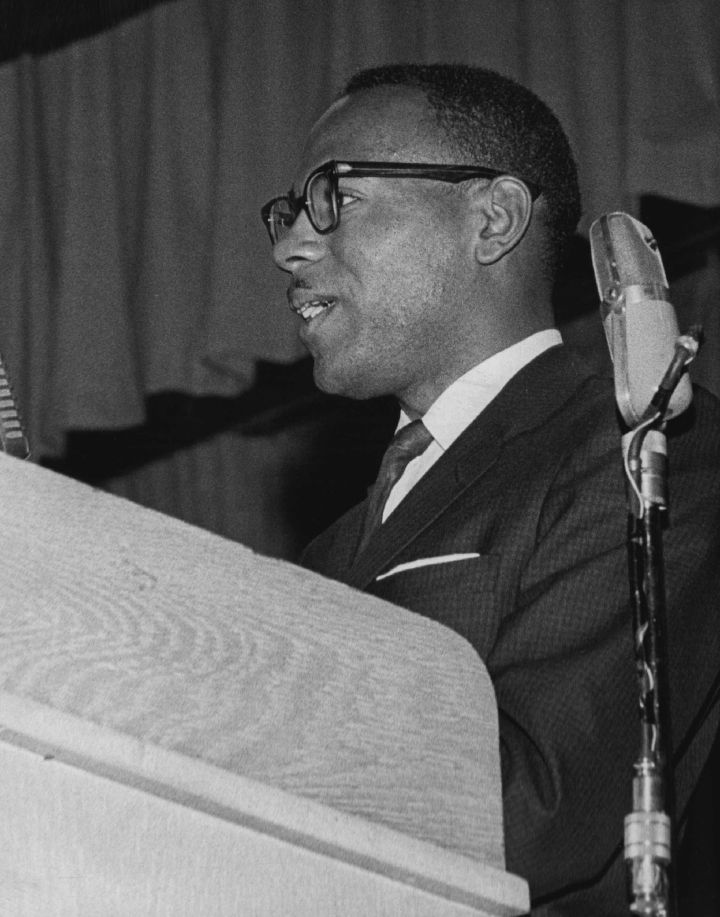 Source:Getty
Source:Getty
SEP 22 1963: “Bombing is a profession,” James Meredith told a Denver audience of 1,400 Sunday not to be surprised if ‘many, many’ more are killed – like the children of Birmingham – in the civil rights struggle. (Photo By Duane Howell/The Denver Post via Getty Images)
6. Obama Designates Congressional Gold Medal For Church Bombings
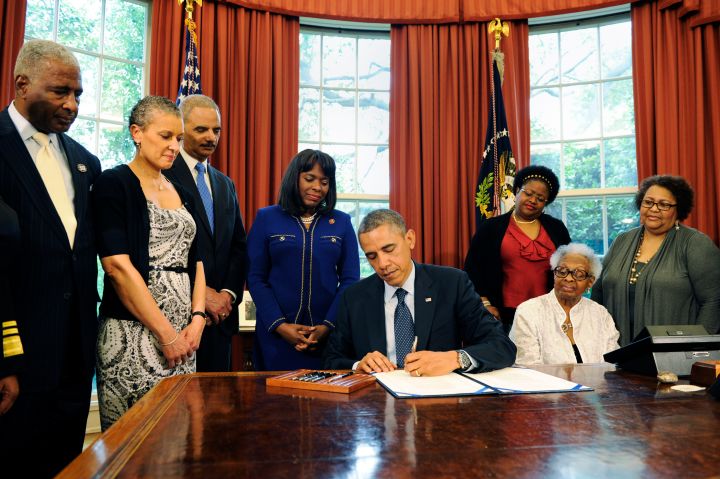 Source:Getty
Source:Getty
President Barack Obama signs a bill in the Oval Office designating the Congressional Gold Medal to commemorate the four young girls killed during the 1963 bombing of 16th Street Baptist Church in Birmingham, Alabama, as (L-R) Birmingham Mayor William Bell, Dr Sharon Malone Holder, Attorney General Eric Holder, Rep Terri Sewell (D-AL), Thelma Pippen McNair, mother of Denise McNair, Lisa McNair, sister of Denise McNair and Dianne Braddock, sister of Carole Robertson look on May 24, 2013 in Washington, D.C. The medal, the highest Congressional civilian honor, was given posthumously to Addie Mae Collins, Carole Robertson, Cynthia Wesley and Denise McNair who died September 15, 1963, when a bomb planted by white supremacists exploded at the church. (Photo by Mike Theiler-Pool/Getty Images
7. 16th Street Baptist Church, site of a 1963 bombing that killed four girls in retaliation of the civil rights movement, Birmingham, Alabama
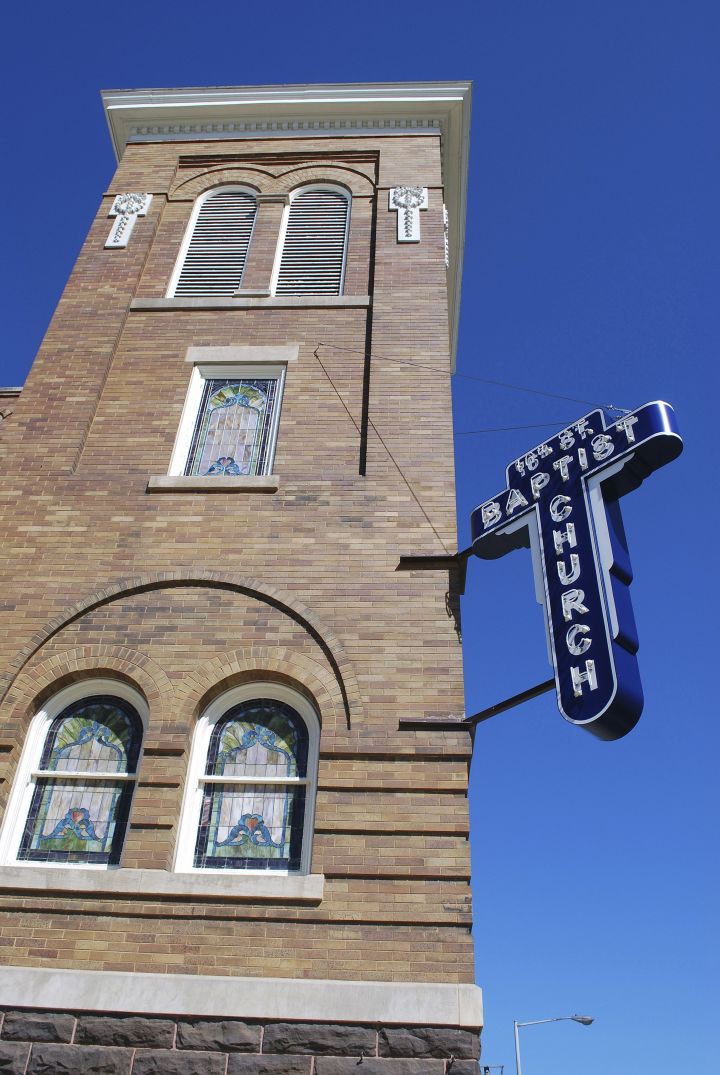 Source:Getty
Source:Getty
16th Street Baptist Church, site of a 1963 bombing that killed four girls in retaliation of the civil rights movement, Birmingham, Alabama. (Photo by: Universal Images Group via Getty Images)
8. Congressional Gold Medals Posthumously Awarded To Birmingham Bombing Victims
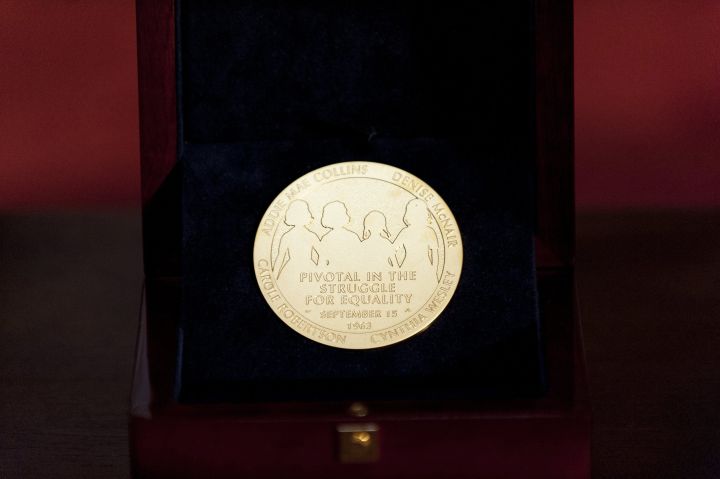 Source:Getty
Source:Getty
U.S. House and Senate leaders posthumously present a Congressional Gold Medal to Addie Mae Collins, Denise McNair, Carole Robertson and Cynthia Wesley, victims of the 1963 Birmingham bombing. The medal is awarded in recognition of how their sacrifice served as a catalyst for the Civil Rights Movement. (Pete Marovich/MCT via Getty Images)
9. Congress Posthumously Honors Four Victims Of 1963 Birmingham Bombing
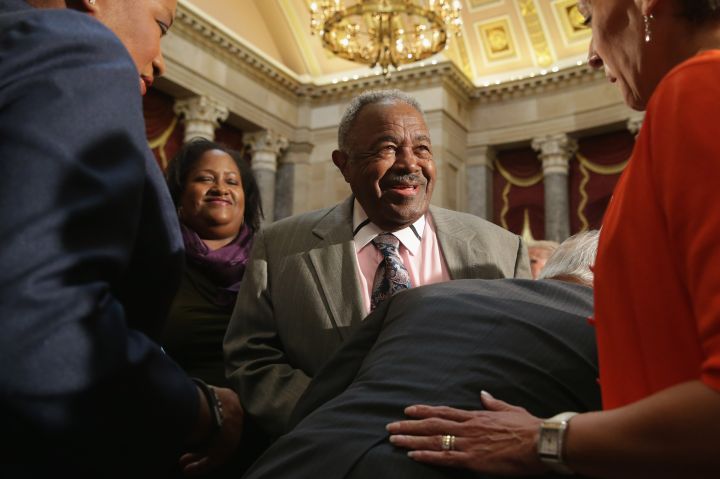 Source:Getty
Source:Getty
Jewell Chris McNair attends a ceremony where his daughter, Denise McNair and three other girls were posthumously awarded the Congressional Gold Medal at the U.S. Capitol September 10, 2013 in Washington, DC. Denise McNair, Addie Mae Collins, Carole Robertson, and Cynthia Wesley were killed September 15, 1963 when members of the Ku Klux Klan bombed the 16th Street Baptist Church in Birmingham, Alabama. The medal honors the girls’ sacrifice and how it served as a catalyst for the Civil Rights Movement. (Photo by Chip Somodevilla/Getty Images)
10. Congress Posthumously Honors Four Victims Of 1963 Birmingham Bombing
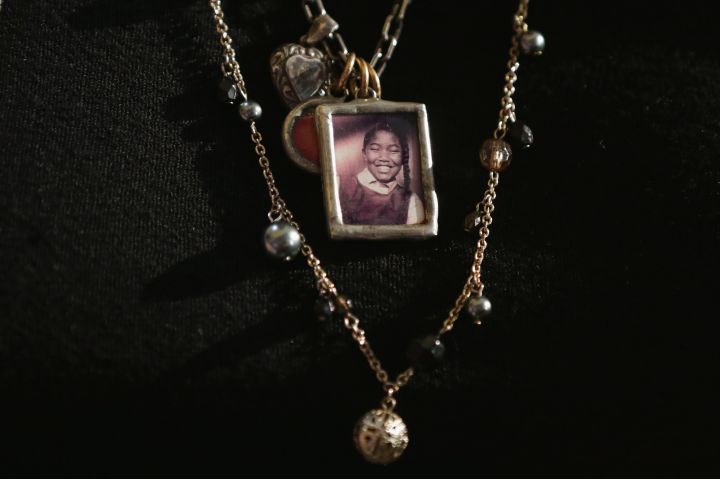 Source:Getty
Source:Getty
Diane Robertson Braddock wears a necklace with the image of her sister, Carole Robertson, who was one of the four young girls who were killed in the 16th Street Baptist Church bombing during a ceremony to award the girls with the Congressional Gold Medal at the U.S. Capitol September 10, 2013 in Washington, DC. Denise McNair, Addie Mae Collins, Carole Robertson, and Cynthia Wesley were killed September 15, 1963 when members of the Ku Klux Klan bombed the 16th Street Baptist Church in Birmingham, Alabama. The medal honors the girls’ sacrifice and how it served as a catalyst for the Civil Rights Movement. (Photo by Chip Somodevilla/Getty Images)
11. Alabama, Birmingham, 16Th Street Baptist Church Stained Glass Window
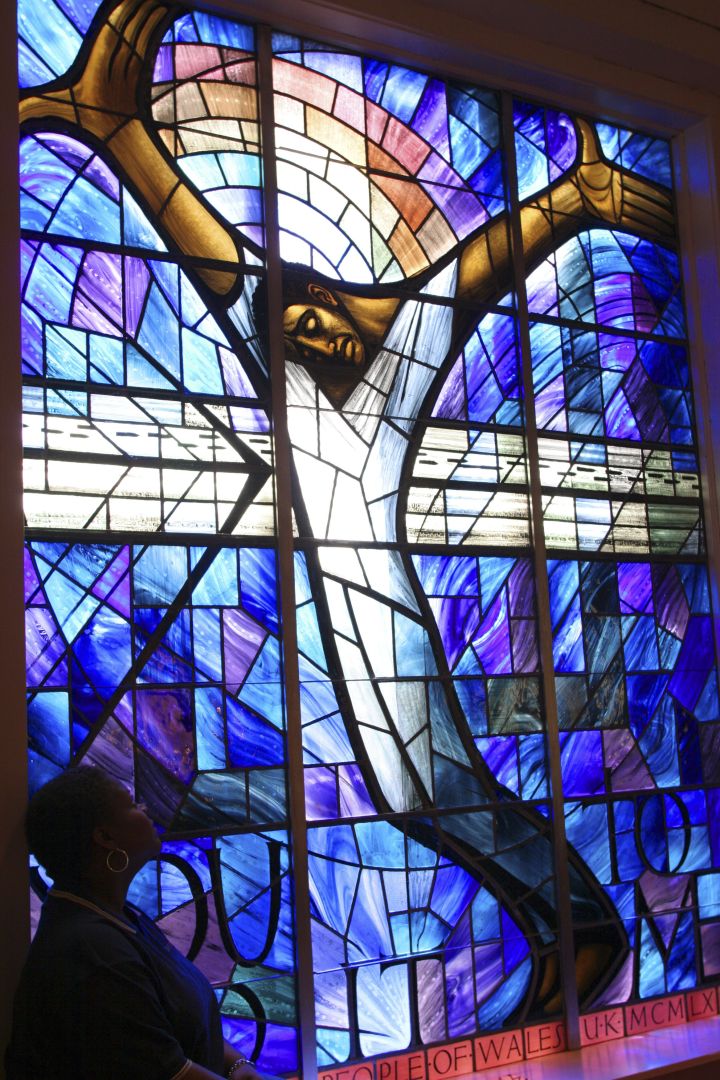 Source:Getty
Source:Getty
Alabama, Birmingham, 16Th Street Baptist Church, Site Of 1963 Bombing, Stained Glass Window. (Photo by: Jeff Greenberg/UIG via Getty Images)
12. Alabama, Birmingham, 16Th Street Baptist Church
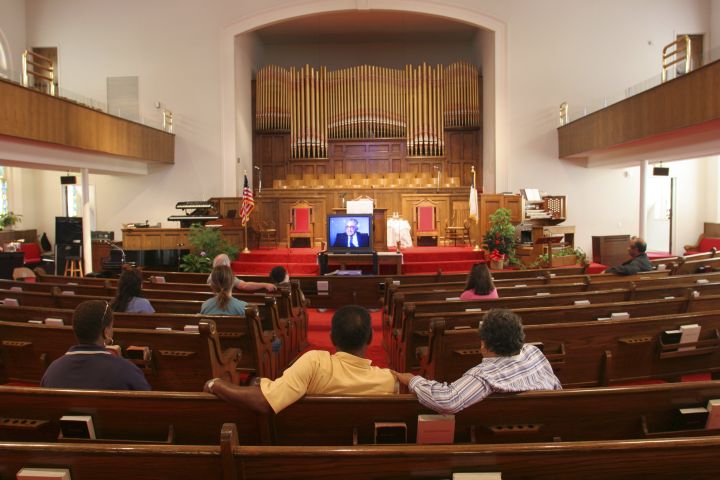 Source:Getty
Source:Getty
Alabama, Birmingham, 16Th Street Baptist Church, Site Of 1963 Bombing. (Photo by: Jeff Greenberg/UIG via Getty Images)
13. The Congress of Racial Equality conducted march.
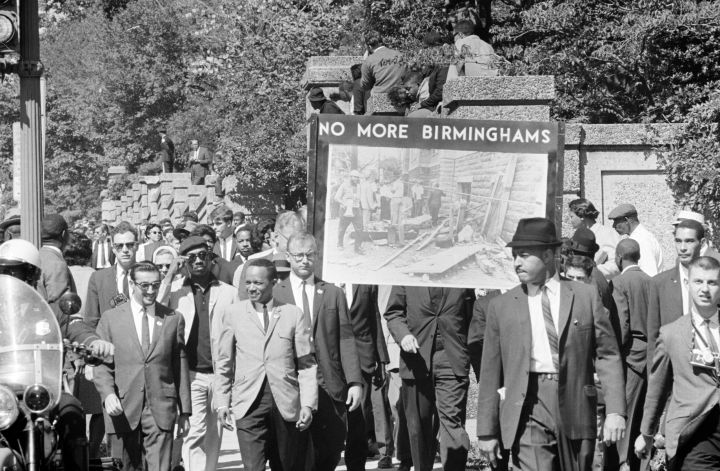 Source:Getty
Source:Getty
Photograph of the Congress of Racial Equality conducted march in memory of Negro youngsters killed in Birmingham bombings. Dated 1963. (Photo by: Universal History Archive/UIG via Getty Images)
14. Sidewalk Damaged by Bomb Blast
 Source:Getty
Source:Getty
African Americans sit on a sidewalk littered with debris from a bomb blast at a nearby church that killed four children.
15. National Guard Troops After Quelling Protest
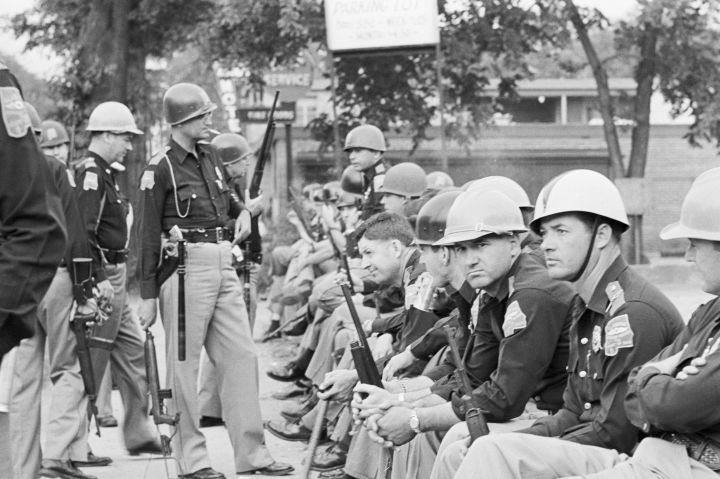 Source:Getty
Source:Getty
National Guard troops rest after trying to calm a crowd participating in a violent protest sparked by the bombing of an African American meeting place and the home of Reverend A.D. King, brother to Martin Luther King, Jr.
16. Bomb Victim’s Mother Crying at Funeral Services
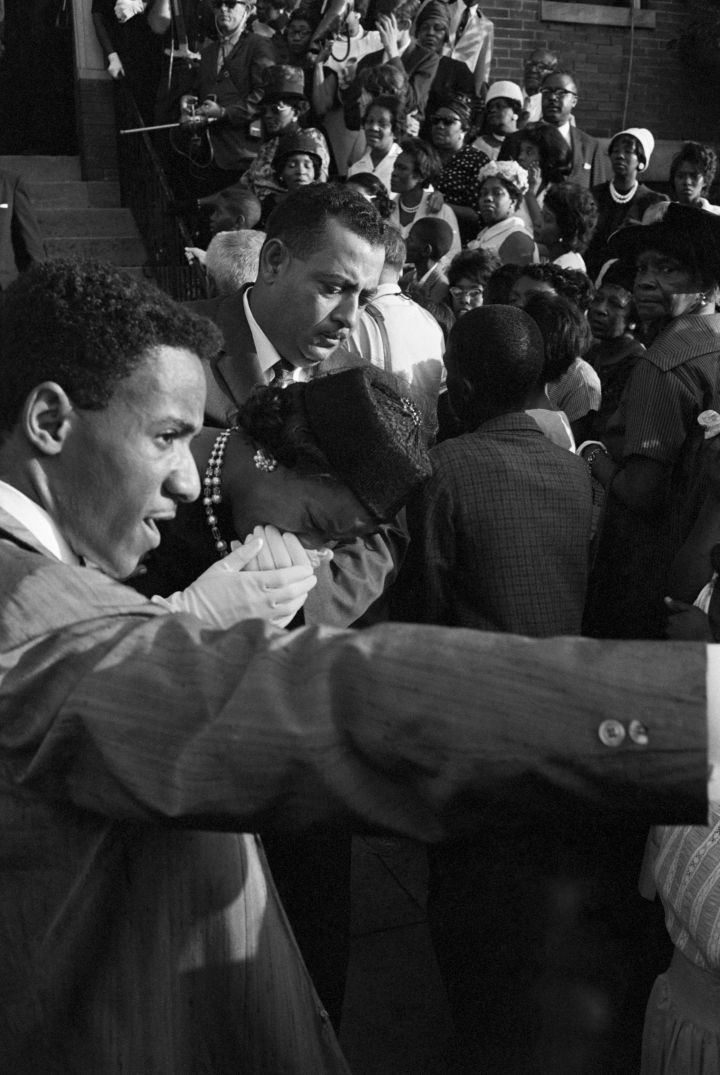 Source:Getty
Source:Getty
The mother of a child killed when a bomb exploded at an African American church breaks down in tears during a funeral service for those killed in the bombing.
17. Arrival of Alabama State Troopers in Birmingham
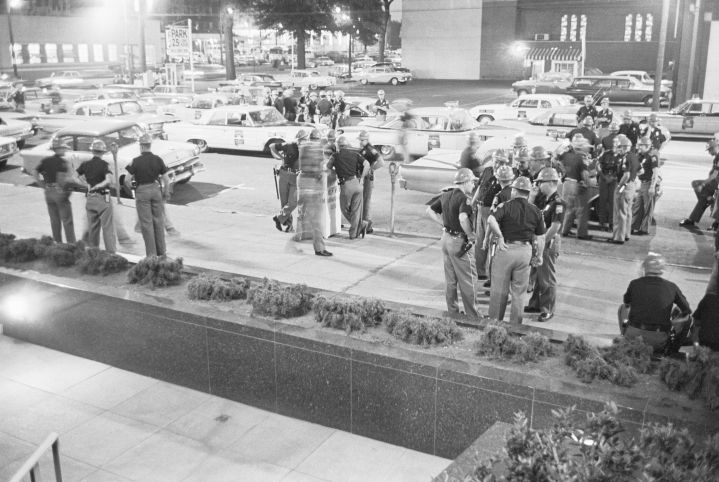 Source:Getty
Source:Getty
After the bombing of an African American church which killed four children, Alabama State Troopers arrive in Birmingham to assist local officers.
18. Bombed Car in Front of Church
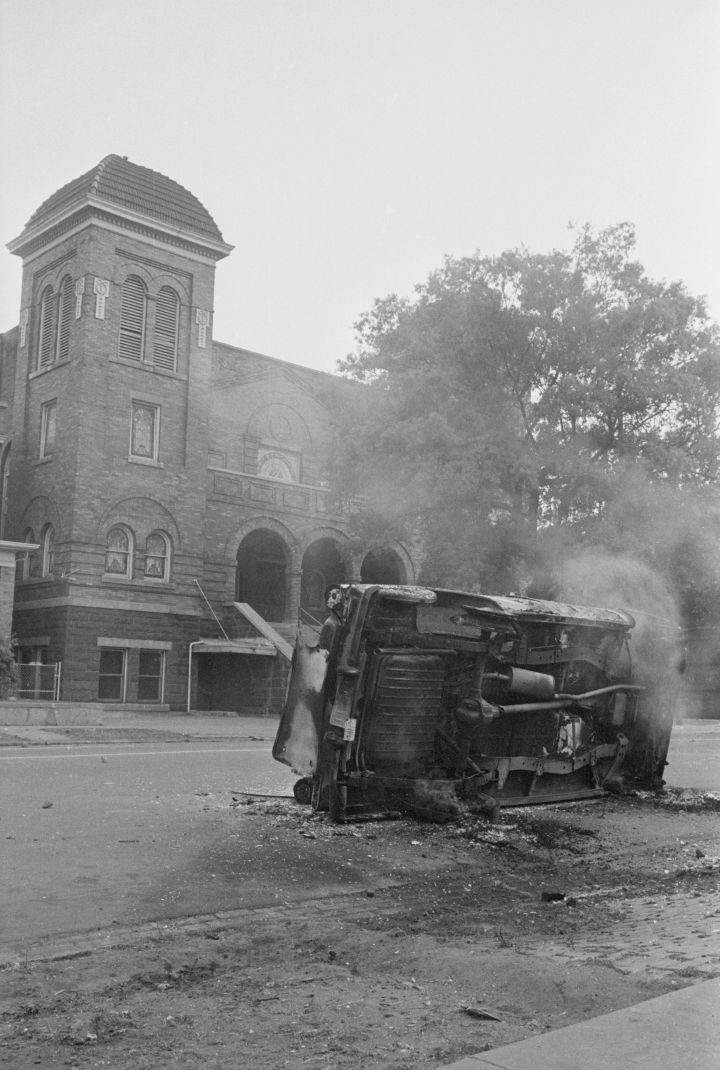 Source:Getty
Source:Getty
A charred automobile sits outside of the 16th Street Baptist Church where followers of Reverend Martin Luther King, Jr. regularly meet.
19. Reverend. A.D. King Speaking at Violent Protest
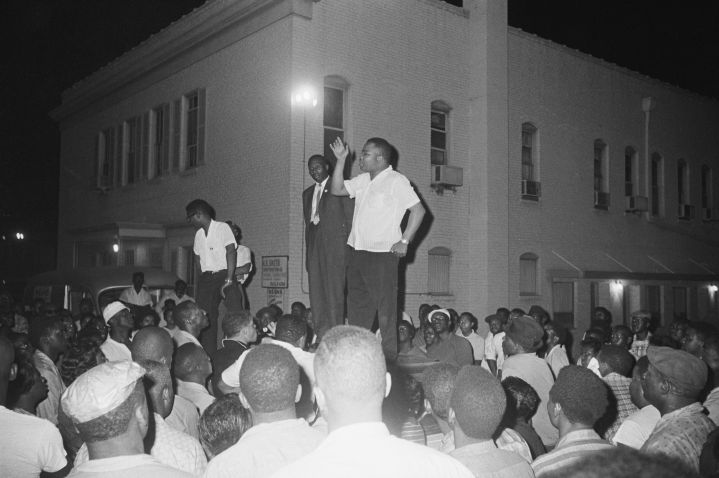 Source:Getty
Source:Getty
Reverend A.D. King, brother of Martin Luther King, Jr. tries to calm a crowd participating in a violent protest sparked by the bombing of an African American meeting place on May 12, 1963.
20. Portrait of Former Klansman Bob Cherry
 Source:Getty
Source:Getty
Bob Cherry, 47, a former Klansman from Birmingham, Alabama, was questioned on 9/27 by Alabama Attorney General Bill Baxley about the 1963 bombing of the Sixteenth Street Baptist Church which killed four young girls. Another former Klansman, Robert Chambliss, was arrested and charged on 9/26 with four counts of murder in Birmingham.
21. Crowd Around Carol Robertson’s Casket
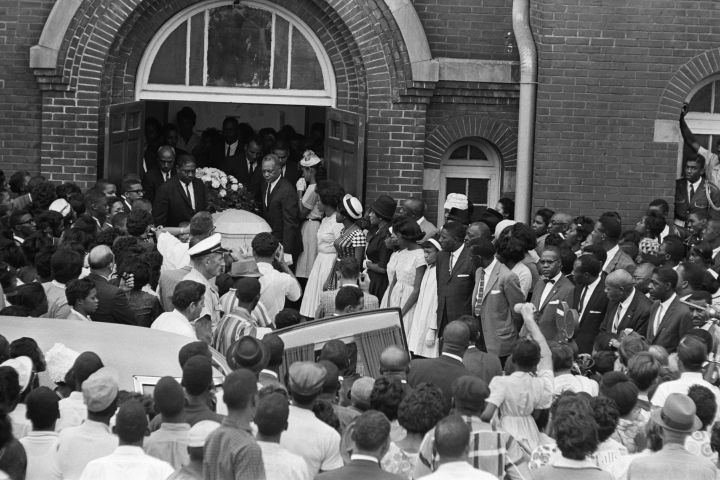 Source:Getty
Source:Getty
Mourners crowd the entrance to St. John’s African Methodist Church as the casket containing the body of 14-year-old Carol Robertson from the church. Robertson and three other girls were killed in the bombing of the nearby Sixteenth Street Baptist Church.
22. Mourners at Funeral
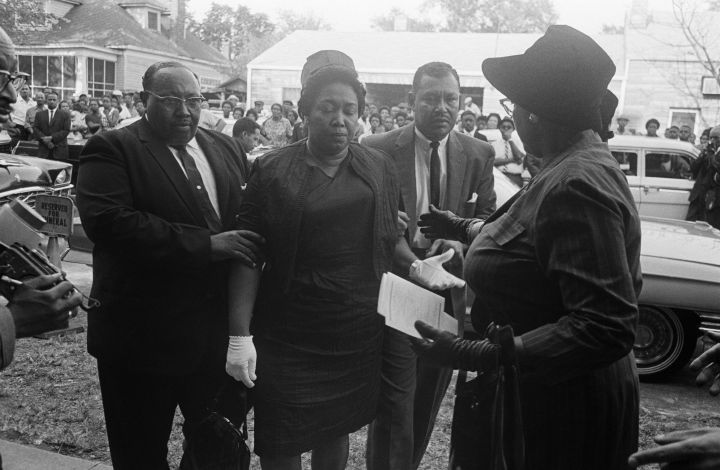 Source:Getty
Source:Getty
Mr. and Mrs. Alvin C. Robertson arrive for funeral services for their 14-year-old daughter Carol. She was one of four victims of a bomb explosion in the basement of the 16th Street Baptist Church.
23. Services for Birmingham Church Bombing Victim
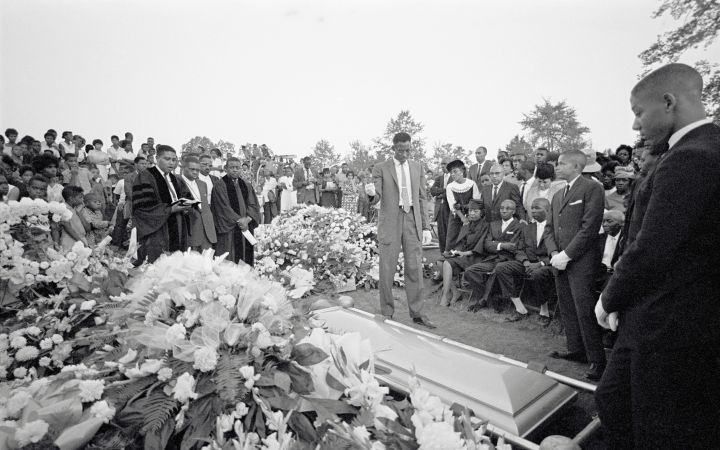 Source:Getty
Source:Getty
(Original Caption) Birmingham, Alabama: Graveside services at Woodlawn cemetery as body of Cynthia Dianne Wesley was buried. Officiating ministers are at left; family at right. Moments later, similar services were held at another grave nearby for Addie Mae Collins. Both girls were victims of the 9/15/1963 bombing of a Negro church.
24. Relative Grieving Bombing Victims
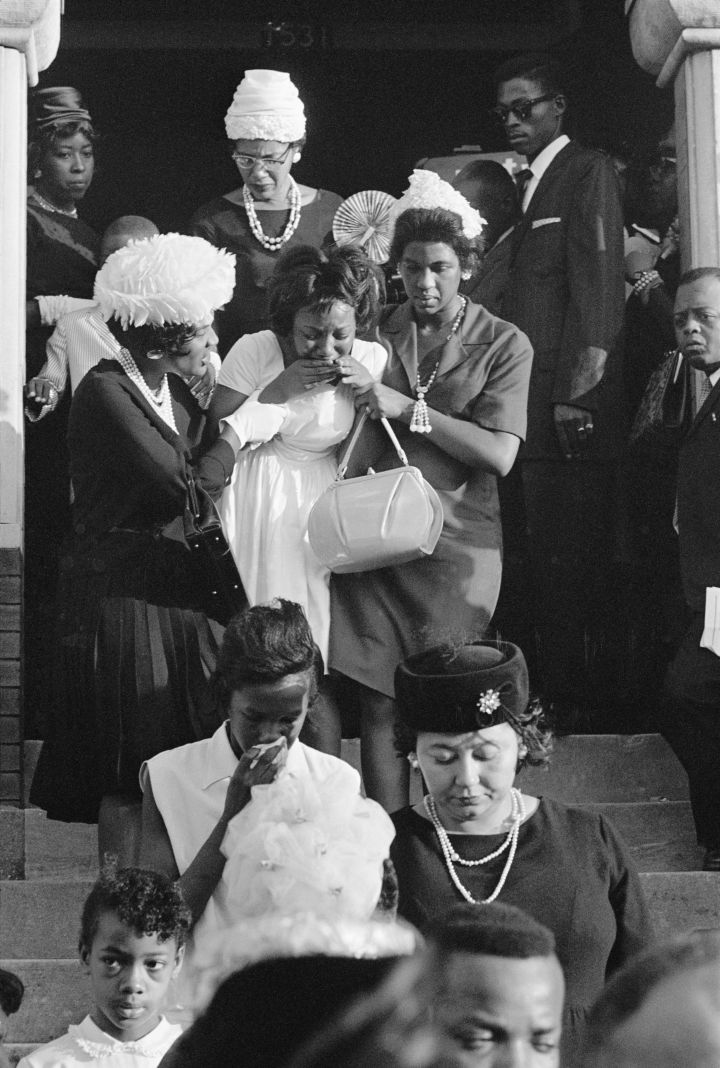 Source:Getty
Source:Getty
(Original Caption) Comforted. Birmingham, Alabama: attending the funeral services for the three girls killed in the September 15th bombing of a Negro church, family members comforts a younger relative as they lead her down the steps of the Sixth Avenue Baptist Church.
25. Funeral for Church Bombing Victim
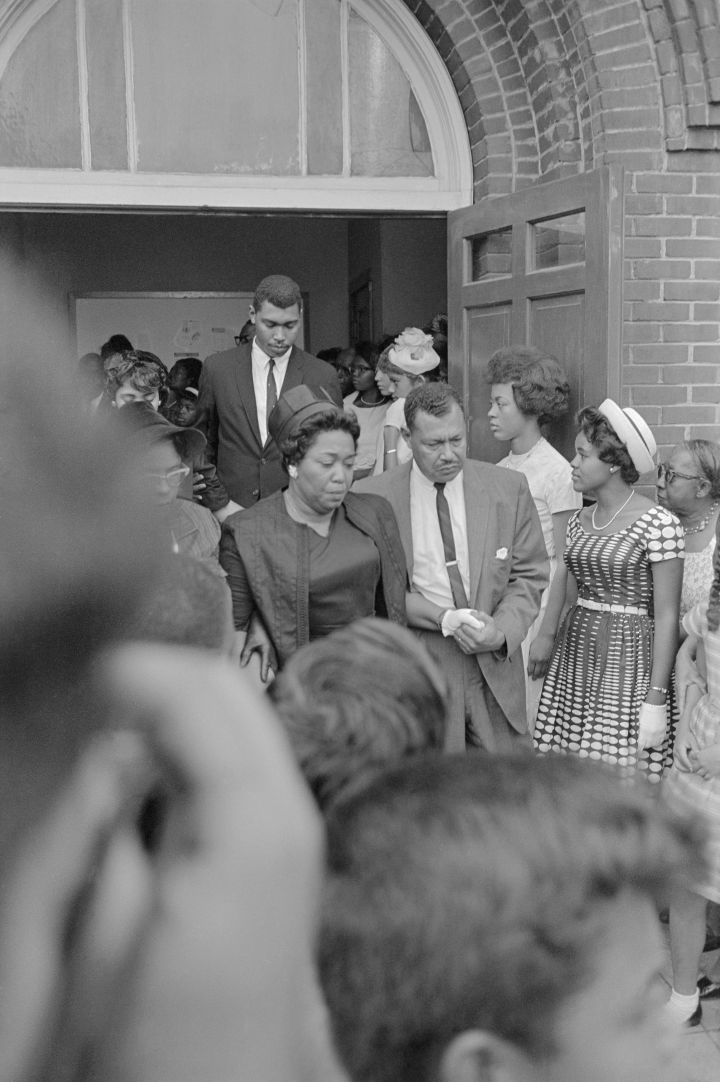 Source:Getty
Source:Getty
(Original Caption) Mr. and Mrs. Alvin C. Robertson (center) hold hands as they leave St. John’s African Methodist Episcopal Church on 9/17 after attending funeral services for their 14-year-old daughter, Carol. The girl was killed with three classmates when a bomb exploded in the 16th Street Baptist Church during Sunday School services on 9/15.
26. FBI Investigators at Bombed Birmingham Baptist Church
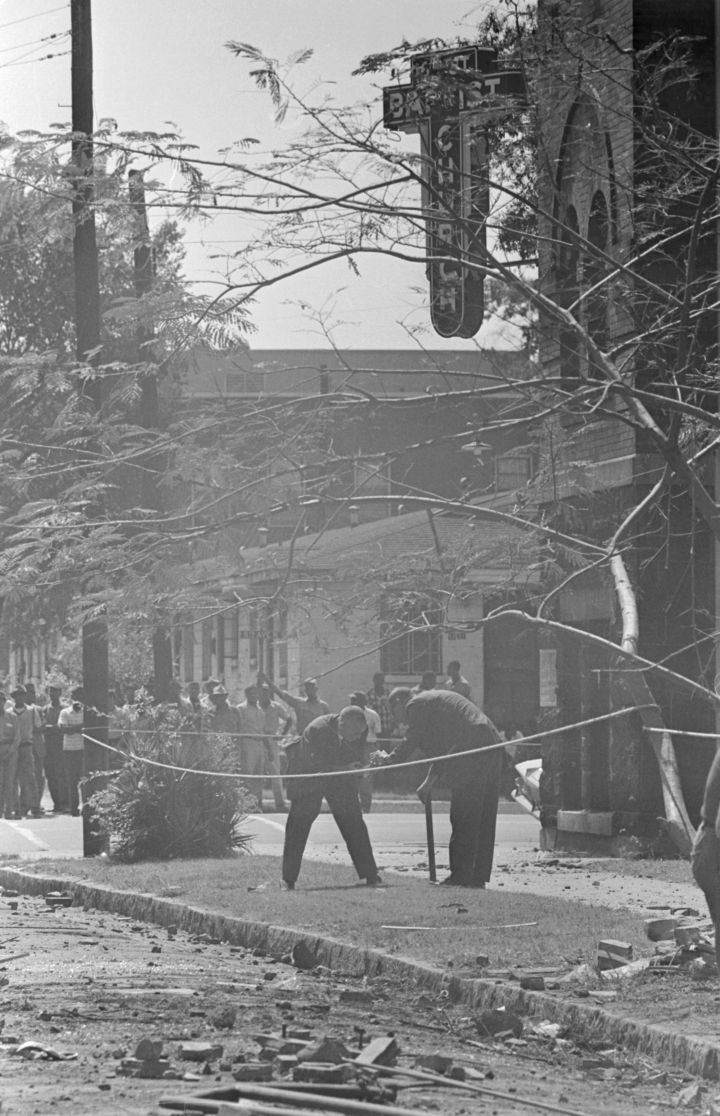 Source:Getty
Source:Getty
(Original Caption) Birmingham, Alabama: Grim faced crowd of Negroes watch (rear), as FBI bomb experts comb rubble-strewn street for clues to the 9/15 bombing of the 16th Street Baptist Church. Four persons were killed in bombing; two others died in a widespread racial violence incident which occured later.
27. Parents of Church Bombing Victim Carol Robertson
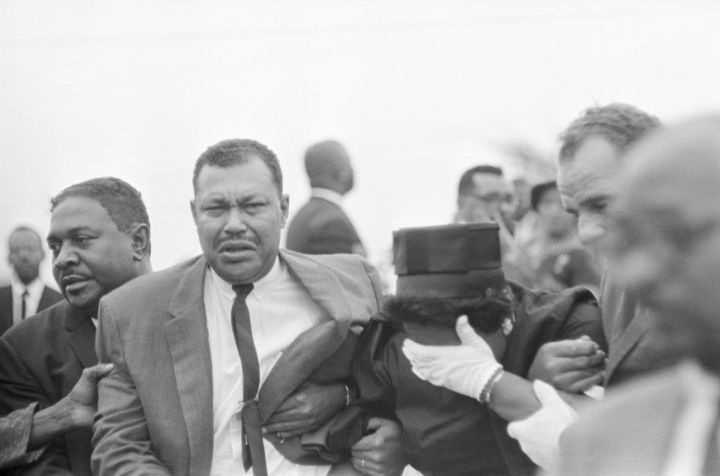 Source:Getty
Source:Getty
(Original Caption) Birmingham, Alabama: Mr. & Mrs. Alvin C. Robertson, parents of 14-year-old Negro girl who was killed 9/15, when a bomb exploded in a Birmingham church, were overcome with emotion here as their daughter, Carol was buried. Negroes crowded into the church and spilled into the street as the funeral service began. Carol Robertson was one of four Negro children killed in the dynamite blast as they attended Sunday School.
28. Funeral for Bombing Victim Carol Robertson
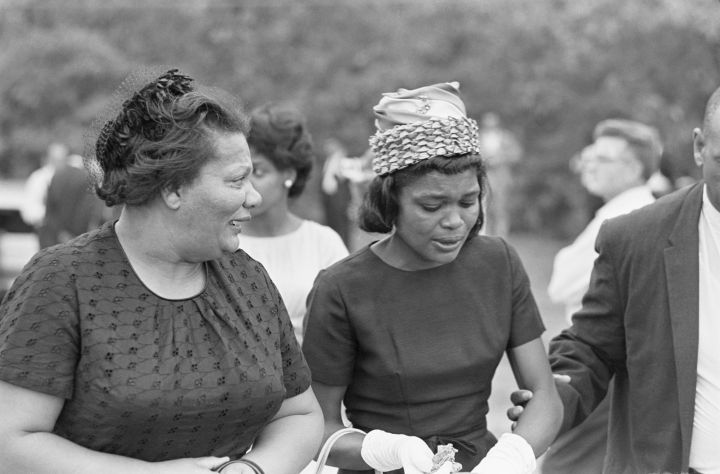 Source:Getty
Source:Getty
(Original Caption) Birmingham, Alabama: Faces of two unidentified Negro women are contorted by grief, as they weep at cemetery where body of 14-year-old Carol Robertson was buried 9/17. Child was one of four killed in 9/15 bombing of a Negro church. Funeral services for the other three are set for 9/18 afternoon.
29. Reaction to Birmingham Bombing
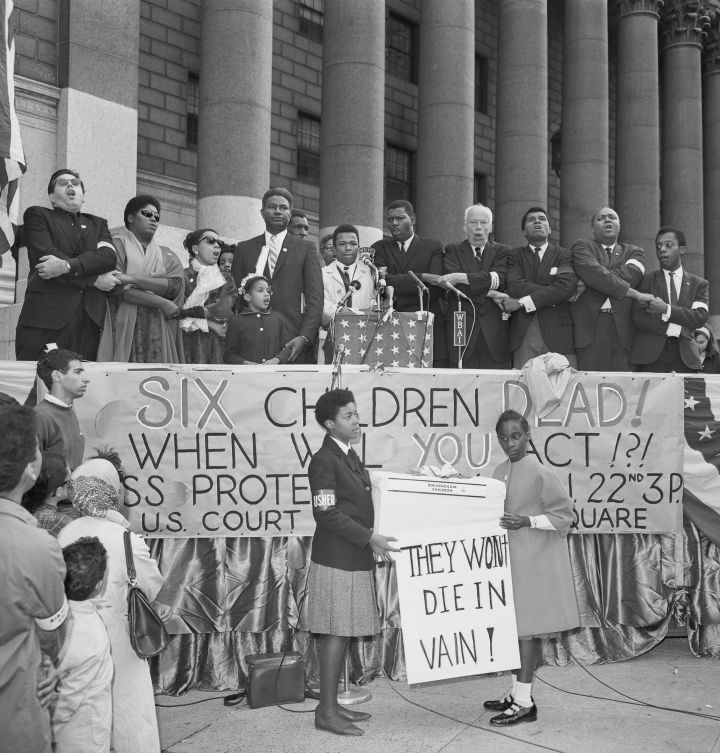 Source:Getty
Source:Getty
(Original Caption) 9/22/1963-New York, NY: Thousands gathered at a rally to protest the murder of the children of Birmingham and to demand federal protection of negro people. Photo shows guest speakers and others on platform joining hands and singing. Girls in foreground hold a white ‘coffin,’ symbolic of the dead children of Birmingham. Some of the people on the platform are James Baldwin, Medgar Evers, Rev. Thomas Kilgore, Jr., Bayard Rustin and Norman Thomas. Photo by Marty Hanley.
30. Police Truck Moving Toward Fire
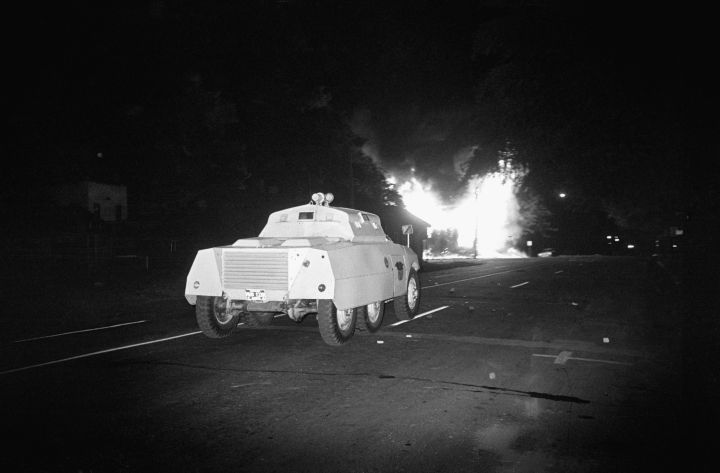 Source:Getty
Source:Getty
An armored police truck stands by ready to disperse rioters. Fires in the background were set by black rioters in retaliation for the bombing of Minister A.D. King’s home. King was the brother of Martin Luther King, Jr.
31. Abernathy,Shuttlesworth,King Walk Solemn
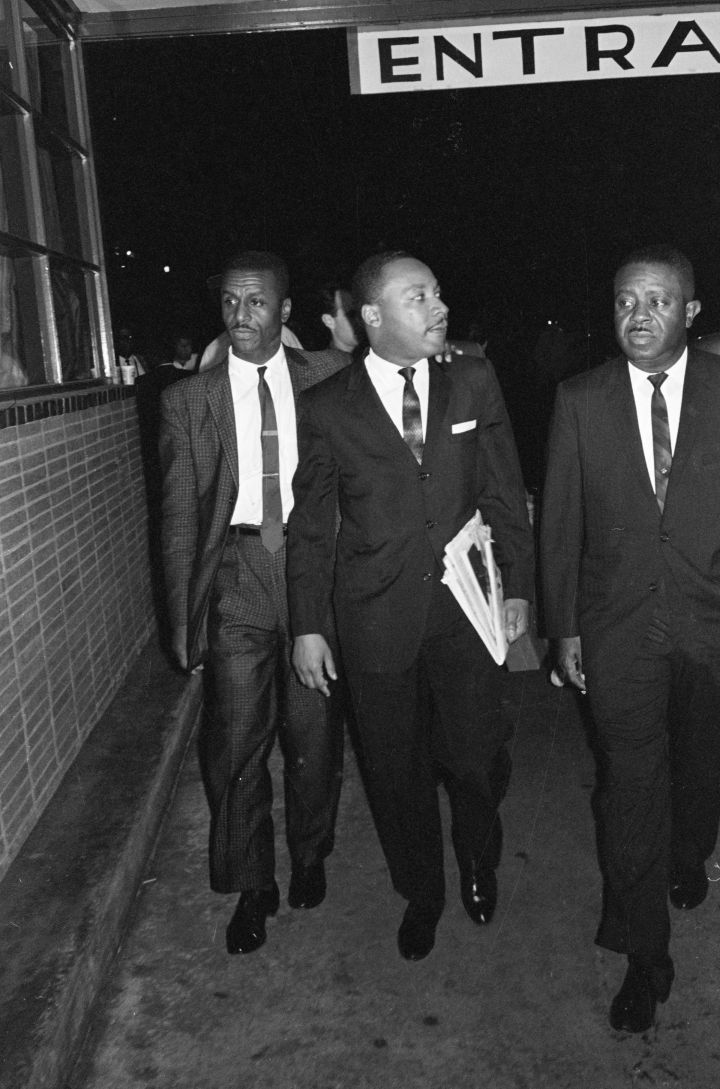 Source:Getty
Source:Getty
(Original Caption) 9/15/1963-Birmingham, AL: Negro leader Rev. Martin Luther King Jr. (center), of Atlanta, is flanked by solemn visaged Rev. Fred L. Shuttlesworth (l) and Rev. Ralph Abernathy after King arrived here to consult with Birmingham Negro leaders about the 9/15 bombing of a Negro church.
32. Martin L. King Seated Addressing Camera
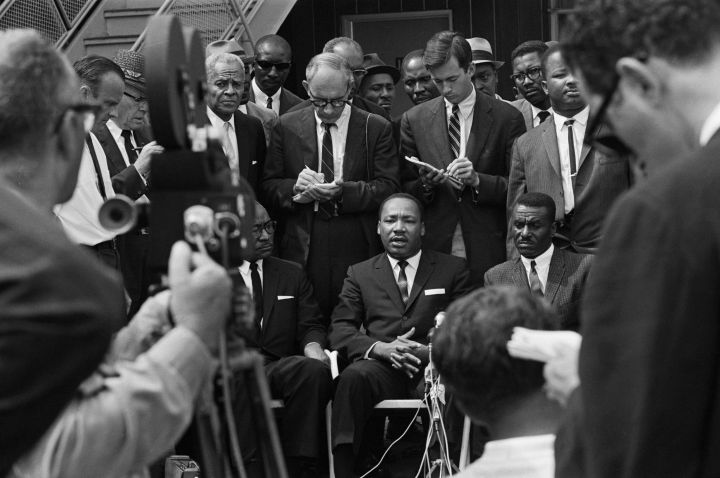 Source:Getty
Source:Getty
(Original Caption) 9/16/1963-Birmingham, AL: Reverend Martin Luther King (C), flanked by Negro leaders Reverend Fred Shuttlesworth (R) and Dr. L.H. Pitts (L), calls on President Kennedy to send regular Army troops into this strife-torn city. King came here after the 9/15 bombing.
33. Martin Luther King Conducting Funeral Service
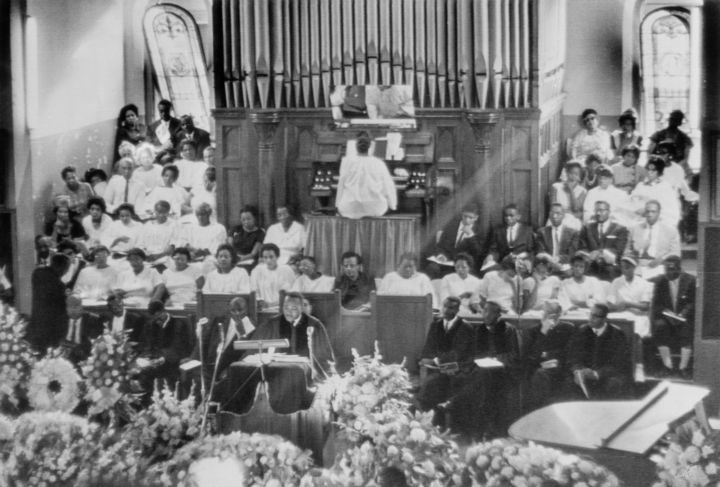 Source:Getty
Source:Getty
Dr. Martin Luther Jr., dressed in a black robe, with a beam of sunlight streaming through behind him, conducts a solemn funeral service for 3 young African American girls killed in a church bombing in Birmingham, Alabama.
34. NEWS: SEP 15 Birmingham Empowerment Week Celebrating the 50th Anniversary of the Civil Rights Movement
 Source:Getty
Source:Getty
15 September 2013: US Attorney General Eric Holder and his wife, Sharon Malone, visit the Four Spirits statue before the memorial service at Sixteenth Street Baptist Church for the girls that were killed in the church bombing on September 15th, 1963. This program is part of Empowerment Week for the City of Birmingham celebrating the 50th Anniversary of the Civil Rights Movement. (Photo by Michael Wade/Icon SMI/Corbis via Getty Images)
35. Denver Post Archives
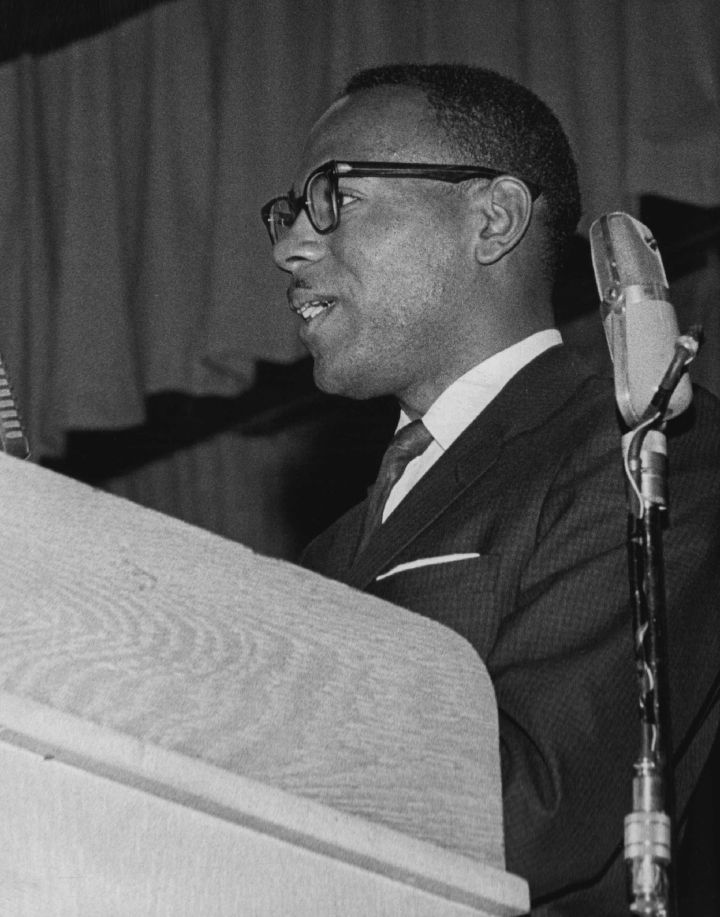 Source:Getty
Source:Getty
SEP 22 1963 James Meredith ‘Bombing is a profession.’ James Meredith told a Denver audience of 1,400 Sunday not to be surprised if ‘many, many’ more are killed – like the children of Birmingham – in the civil rights struggle. Credit: Denver Post (Denver Post via Getty Images)
36. The Congress of Racial Equality conducted march.
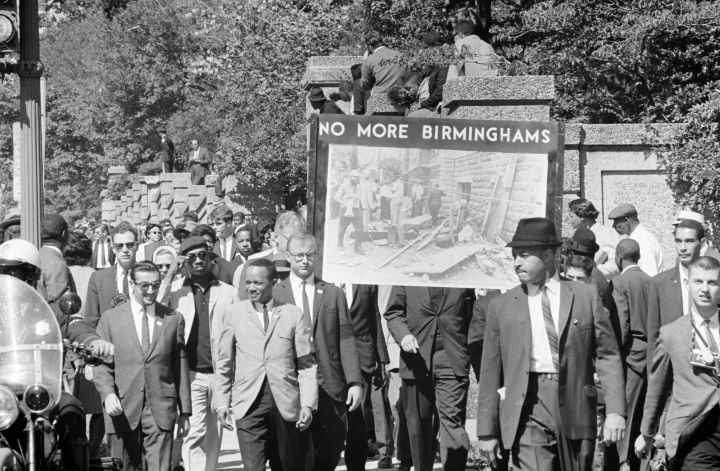 Source:Getty
Source:Getty
Photograph of the Congress of Racial Equality conducted march in memory of Negro youngsters killed in Birmingham bombings. Dated 1963. (Photo by: Photo 12/UIG via Getty Images)
37. Outside Arthur Shores’ Bombed Home
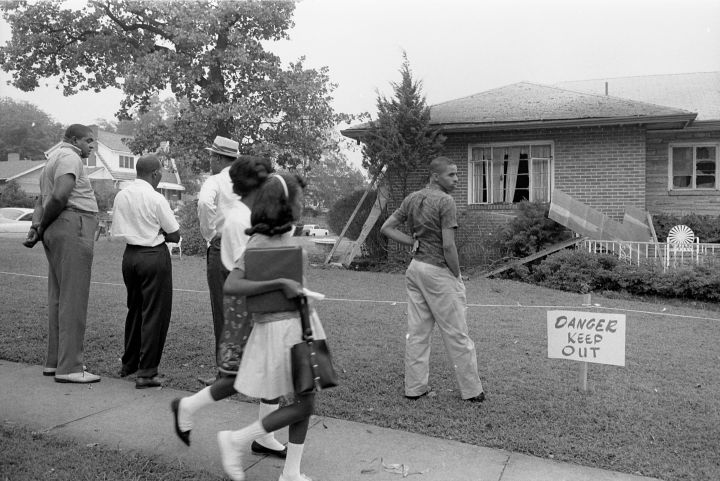 Source:Getty
Source:Getty
A group of onlookers stand on a sidewalk in front of NAACP attorney Arthur Shores’ bomb-damaged home, Birmingham, Alabama, September 5, 1963. A sign on the lawn reads ‘Danger Keep Out.’ (Photo by Library of Congress/Interim Archives/Getty Images)
38. Birmingham Cityscapes and City Views
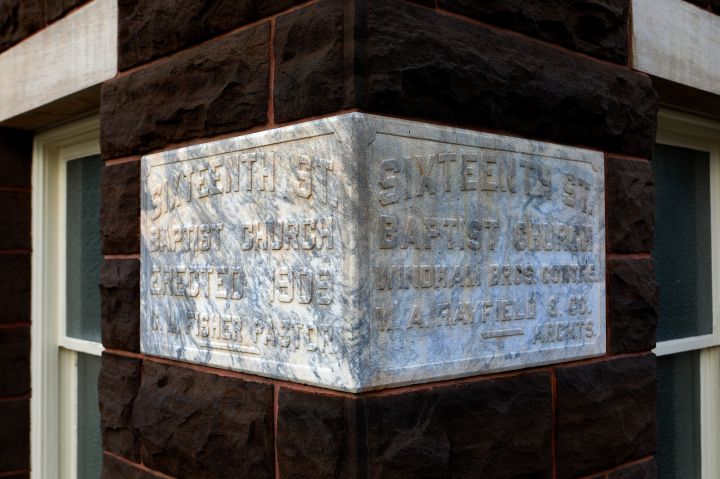 Source:Getty
Source:Getty
16th Street Baptist Church signage, site of the September 15, 1963 Church bombing in Birmingham, Alabama on July 5, 2018. (Photo By Raymond Boyd/Getty Images)
39. Birmingham Cityscapes and City Views
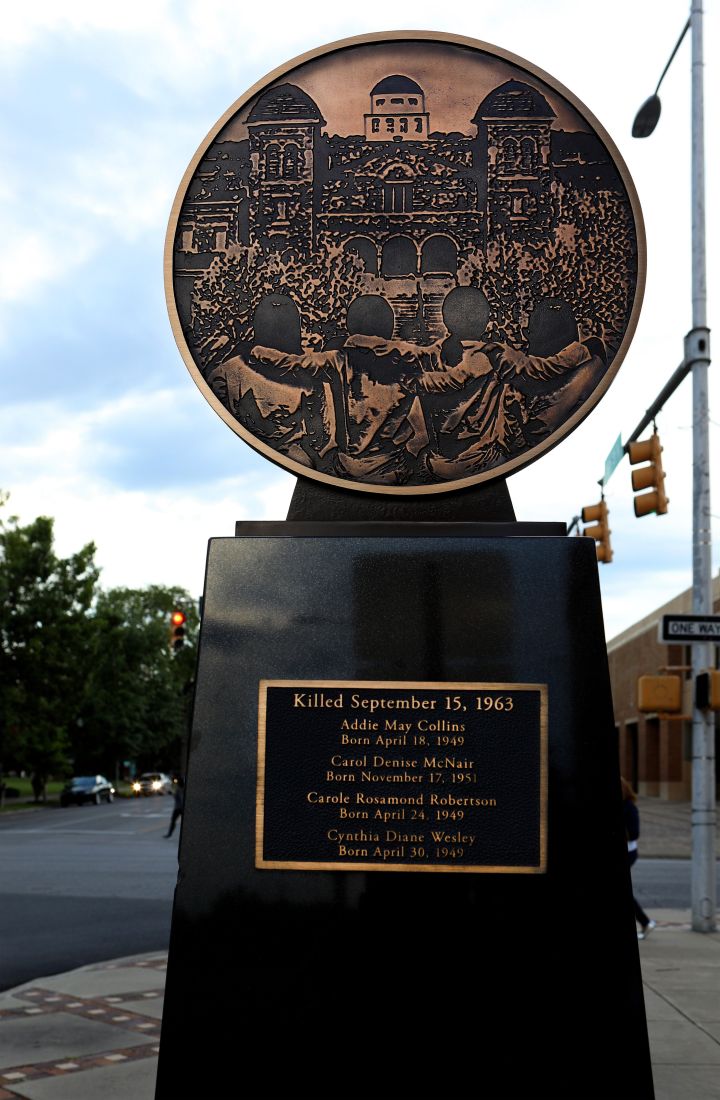 Source:Getty
Source:Getty
BIRMINGHAM, AL – JULY 05: A Monument dedicated to the four girls killed in the September 15, 1963 Church bombing stands outside the 16th Street Baptist Church in Birmingham, Alabama on July 5, 2018. (Photo By Raymond Boyd/Getty Images) vertical,photography,arts culture and entertainment,usa,child,girls,death,architecture,gulf coast states,dedication,monument,alabama,birmingham – alabama,bombing,16th street baptist church – birmingham
40. Birmingham Cityscapes and City Views
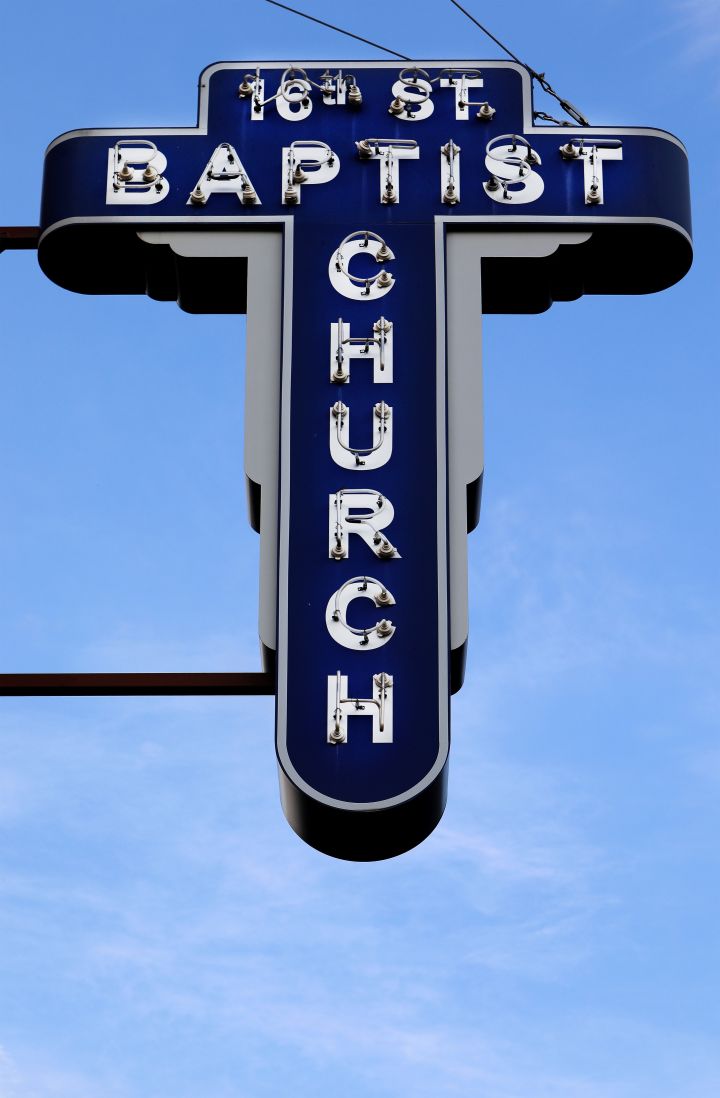 Source:Getty
Source:Getty
16th Street Baptist Church signage, site of the September 15, 1963 Church bombing in Birmingham, Alabama on July 5, 2018. (Photo By Raymond Boyd/Getty Images)
41. Washington Protest
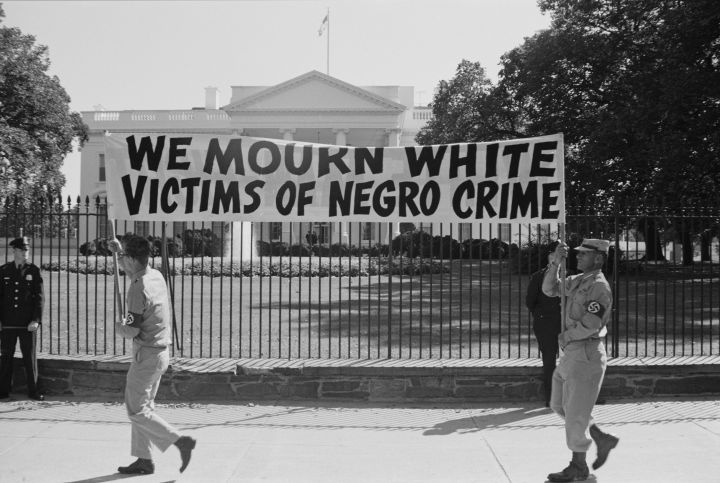 Source:Getty
Source:Getty
Two men with swastika armbands march before the White House in Washington, D.C., with a banner reading ‘We Mourn White Victims of Negro Crime’, September 1963. They are reacting to the protests against the bombing of the 16th Street Baptist Church in Birmingham, Alabama by white supremacists, in which four girls were killed.
42. Washington Protest
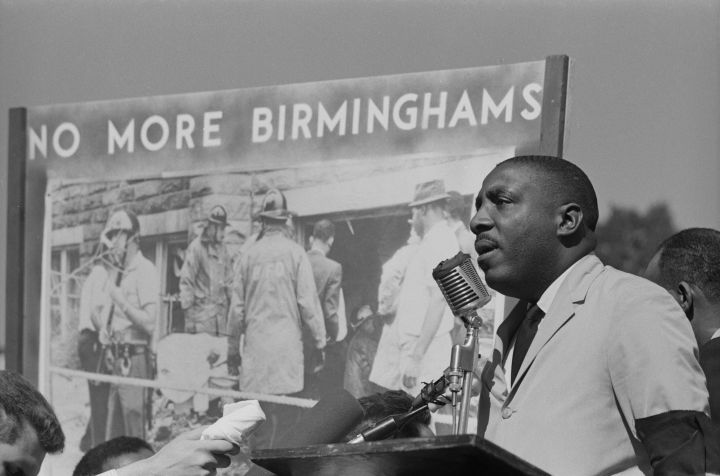 Source:Getty
Source:Getty
Comedian and activist Dick Gregory (1932 – 2017) addresses a civil rights demonstration in Washington, D.C., in September 1963. Behind him is a poster reading ‘No More Birminghams’, in reference to the bombing of the 16th Street Baptist Church in Birmingham, Alabama, by white supremacists. (Photo by Michael Ochs Archives/Getty Images)
43. Washington Protest
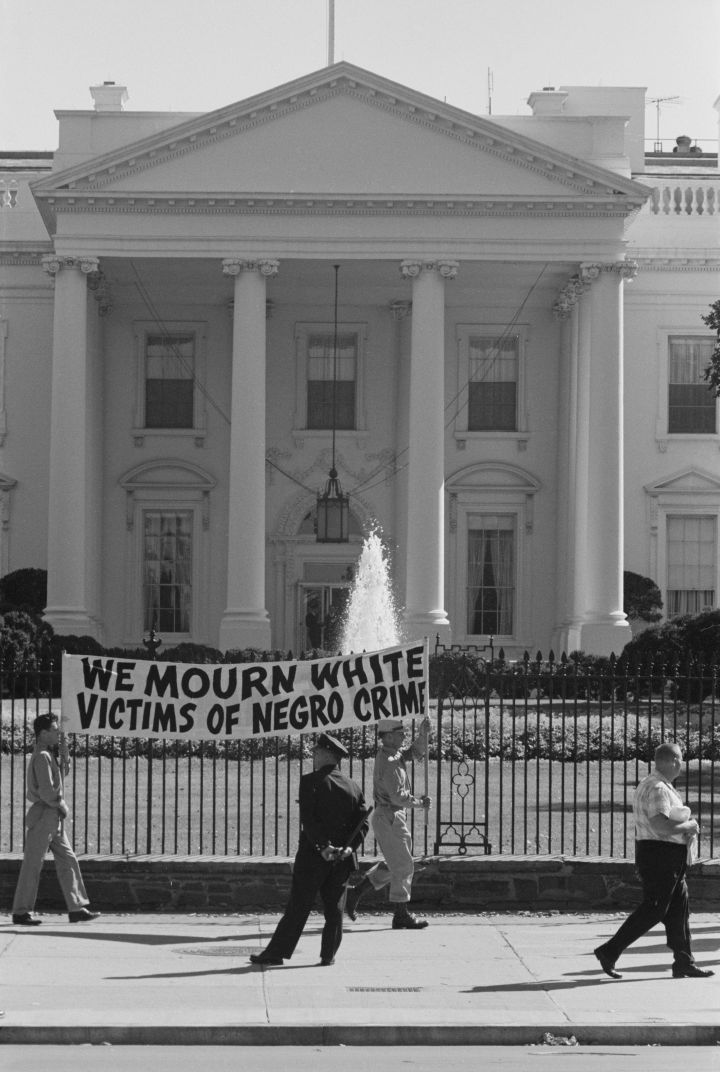 Source:Getty
Source:Getty
Two men march before the White House in Washington, DC, with a banner reading ‘We Mourn White Victims of Negro Crime’, September 1963. They are reacting to the protests against the bombing of the 16th Street Baptist Church in Birmingham, Alabama by white supremacists, in which four girls were killed. (Photo by Michael Ochs Archives/Getty Images)
44. Washington Protest
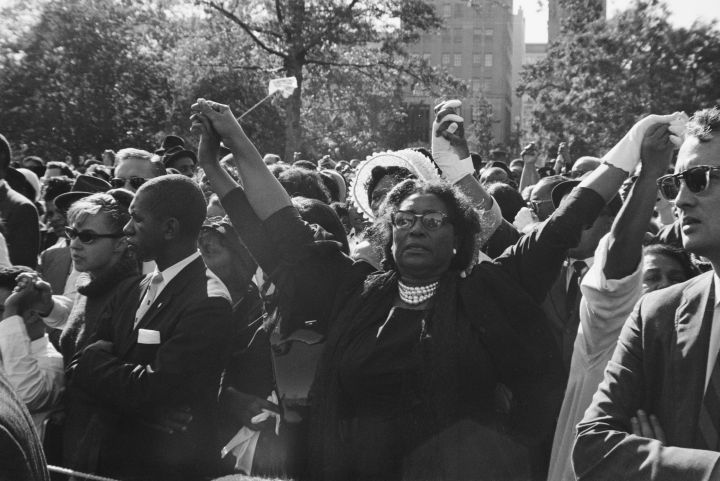 Source:Getty
Source:Getty
People holding hands at a civil rights demonstration in Washington, DC, in the aftermath of the 16th Street Baptist Church bombing in Birmingham, Alabama, September 1963. (Photo by Michael Ochs Archives/Getty Images)
45. Washington Protest
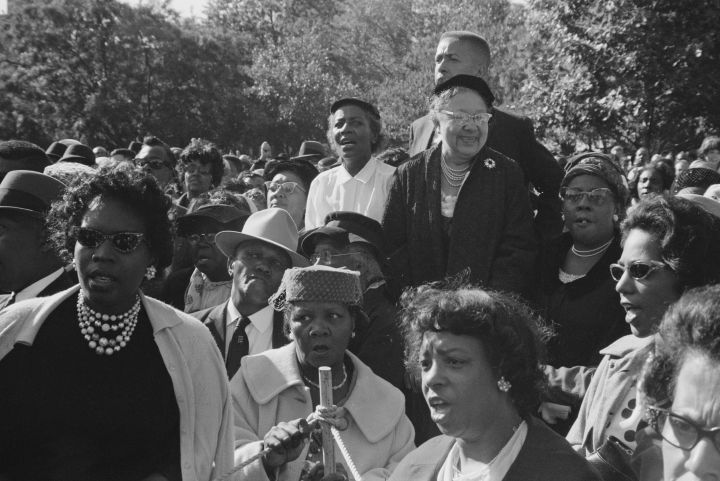 Source:Getty
Source:Getty
Women at a civil rights demonstration in Washington, DC, in the aftermath of the bombing of the 16th Street Baptist Church in Birmingham, Alabama, by white supremacists, September 1963. (Photo by Michael Ochs Archives/Getty Images)
46. Martin L. King Seated Addressing Camera
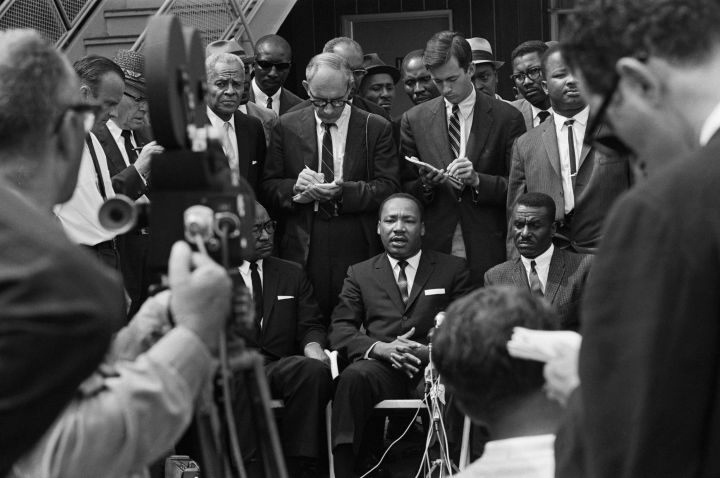 Source:Getty
Source:Getty
(Original Caption) 9/16/1963-Birmingham, AL: Reverend Martin Luther King (C), flanked by Negro leaders Reverend Fred Shuttlesworth (R) and Dr. L.H. Pitts (L), calls on President Kennedy to send regular Army troops into this strife-torn city. King came here after the 9/15 bombing.
47. Birmingham Cityscapes and City Views
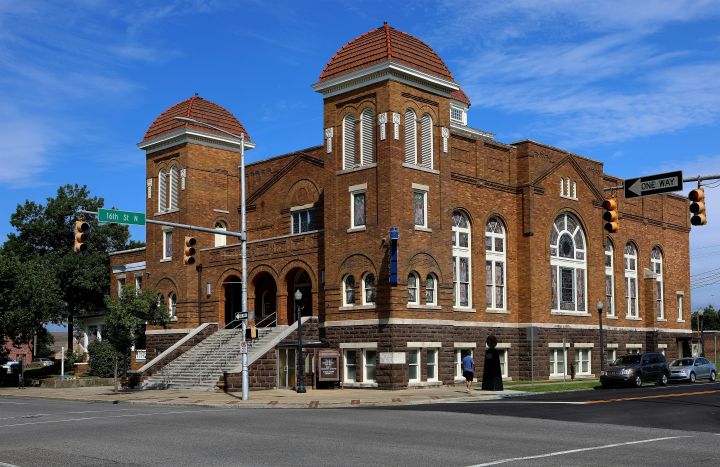 Source:Getty
Source:Getty
16th Street Baptist Church, site of the September 15, 1963 Church bombing in Birmingham, Alabama on July 7, 2018. (Photo By Raymond Boyd/Getty Images)
48. Birmingham Cityscapes and City Views
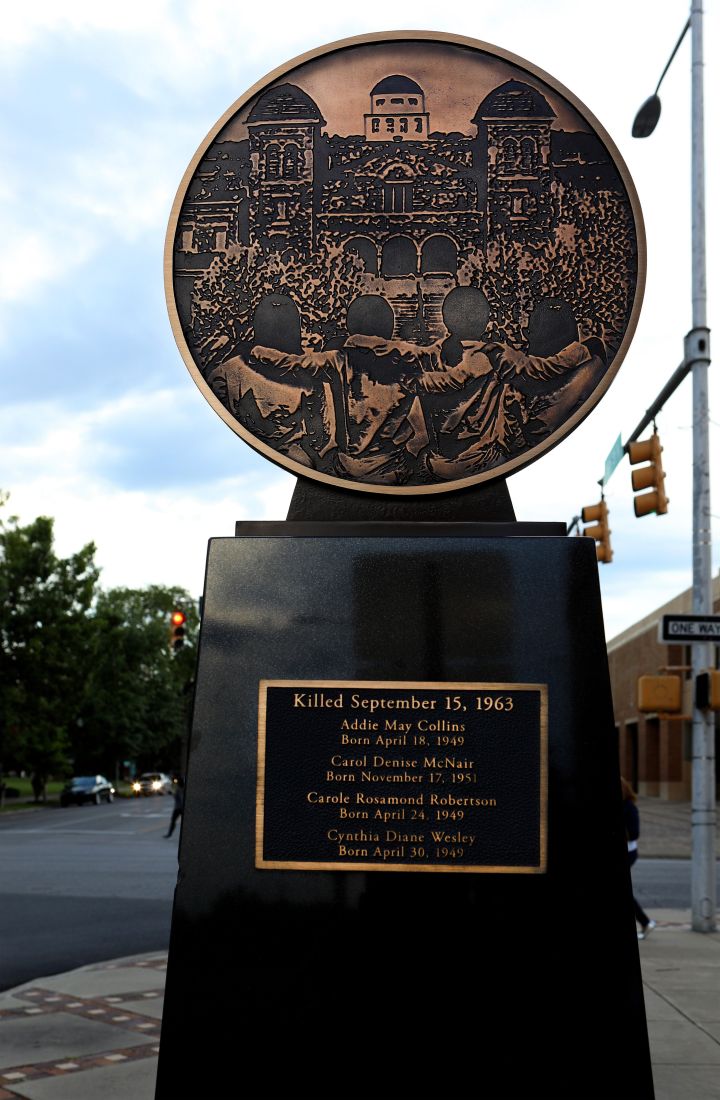 Source:Getty
Source:Getty
A Monument dedicated to the four girls killed in the September 15, 1963 Church bombing stands outside the 16th Street Baptist Church in Birmingham, Alabama on July 5, 2018.
49. Birmingham Cityscapes and City Views
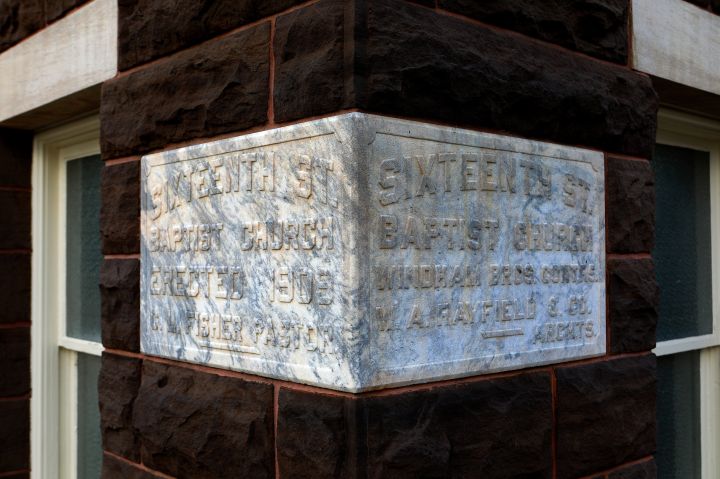 Source:Getty
Source:Getty
16th Street Baptist Church signage, site of the September 15, 1963 Church bombing in Birmingham, Alabama on July 5, 2018.
50. Birmingham Cityscapes and City Views
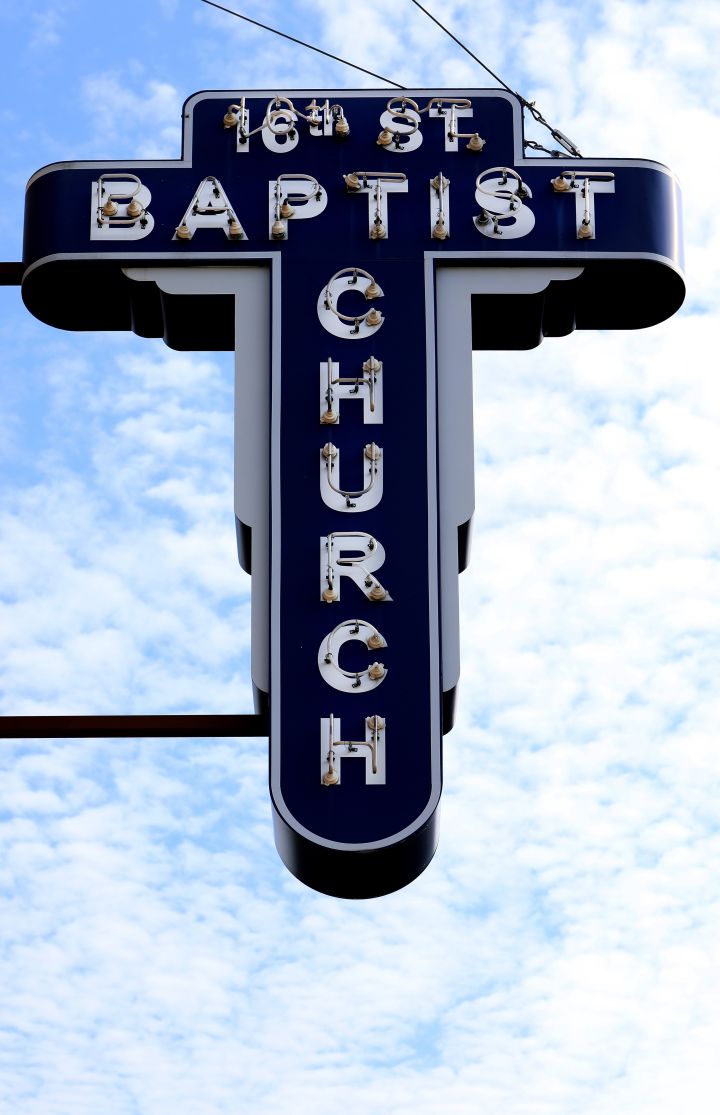 Source:Getty
Source:Getty
16th Street Baptist Church signage, site of the September 15, 1963 Church bombing in Birmingham, Alabama on July 7, 2018. (Photo By Raymond Boyd/Getty Images)
51. Washington Protest
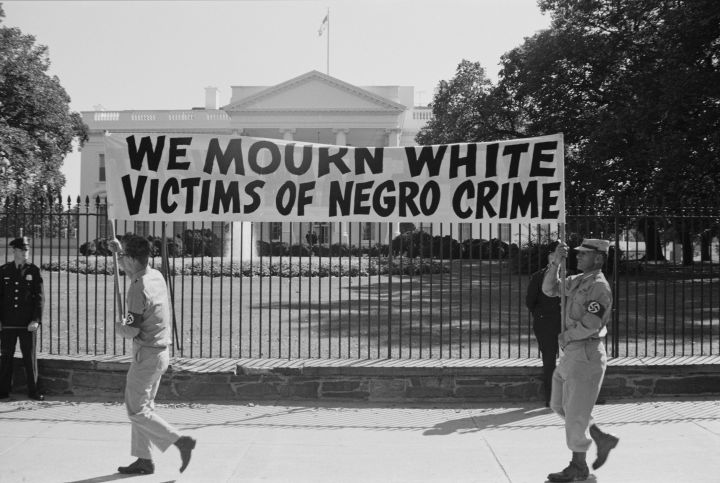 Source:Getty
Source:Getty
Two men with swastika armbands march before the White House in Washington, DC, with a banner reading ‘We Mourn White Victims of Negro Crime’, September 1963. They are reacting to the protests against the bombing of the 16th Street Baptist Church in Birmingham, Alabama by white supremacists, in which four girls were killed. (Photo by Michael Ochs Archives/Getty Images)
52. Washington Protest
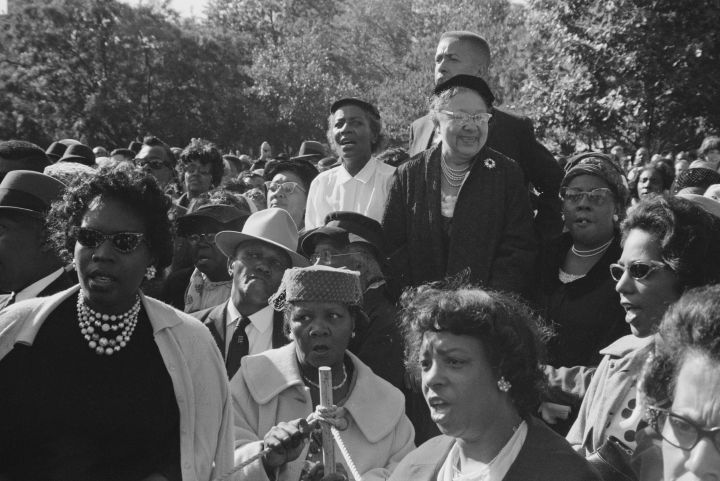 Source:Getty
Source:Getty
Women at a civil rights demonstration in Washington, DC, in the aftermath of the bombing of the 16th Street Baptist Church in Birmingham, Alabama, by white supremacists, September 1963. (Photo by Michael Ochs Archives/Getty Images)
53. Washington Protest
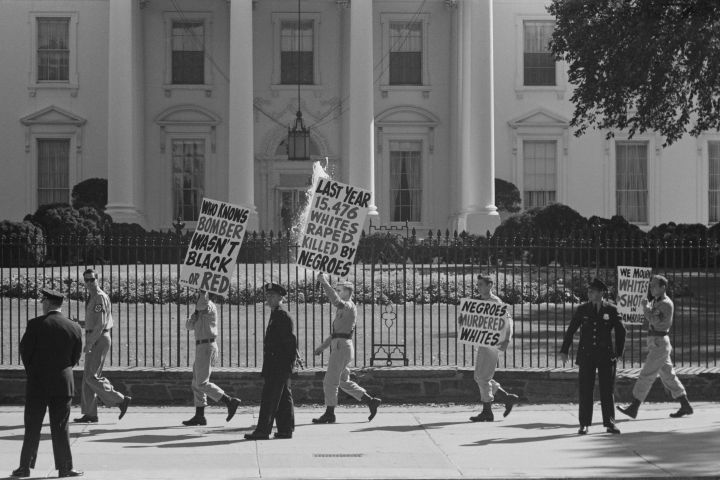 Source:Getty
Source:Getty
Men with swastika armbands march before the White House in Washington, DC, with placards reading ‘Negroes Murdered Whites’ etc, September 1963. They are reacting to the protests against the bombing of the 16th Street Baptist Church in Birmingham, Alabama by white supremacists, in which four girls were killed. (Photo by Michael Ochs Archives/Getty Images)
54. Washington Protest
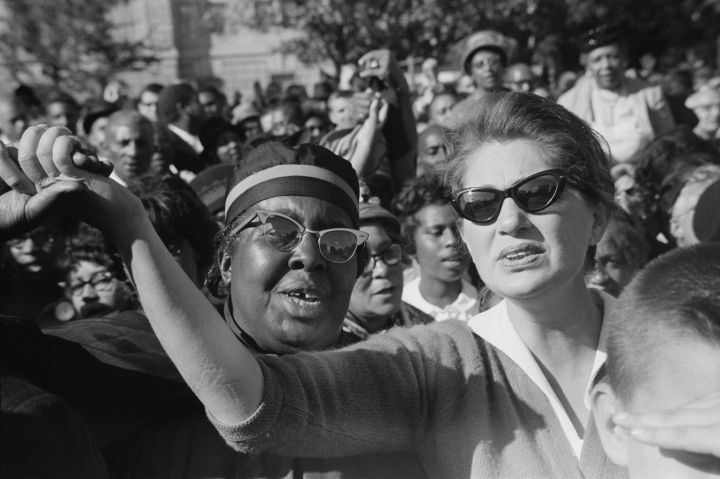 Source:Getty
Source:Getty
Women holding hands at a civil rights demonstration in Washington, DC, in the aftermath of the 16th Street Baptist Church bombing in Birmingham, Alabama, September 1963. (Photo by Michael Ochs Archives/Getty Images)
55. Washington Protest
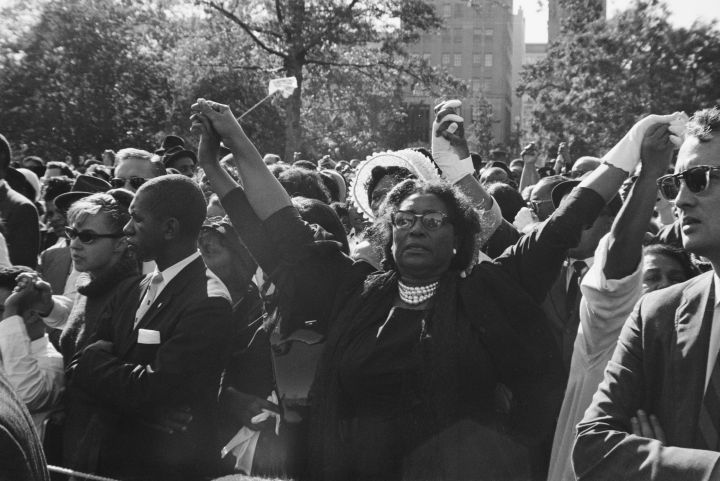 Source:Getty
Source:Getty
People holding hands at a civil rights demonstration in Washington, DC, in the aftermath of the 16th Street Baptist Church bombing in Birmingham, Alabama, September 1963. (Photo by Michael Ochs Archives/Getty Images)
56. Washington Protest
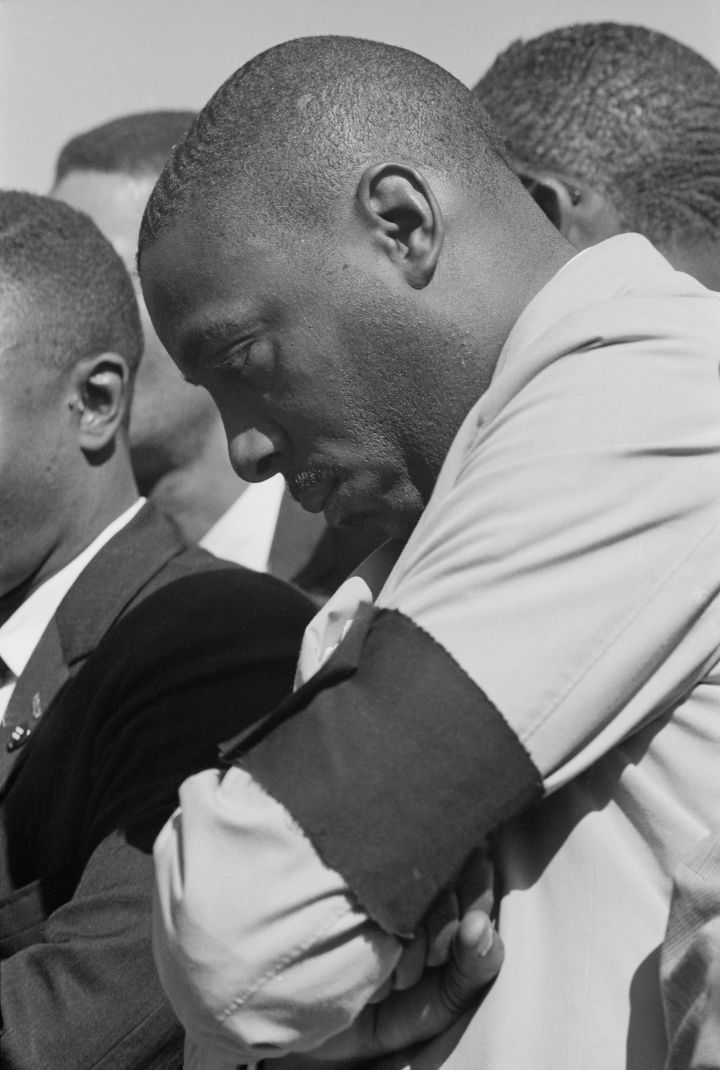 Source:Getty
Source:Getty
Comedian and activist Dick Gregory (1932 – 2017) wearing a black armband at a civil rights demonstration in Washington, DC, in the aftermath of the bombing of the 16th Street Baptist Church in Birmingham, Alabama, by white supremacists, September 1963. (Photo by Michael Ochs Archives/Getty Images)
57. Washington Protest
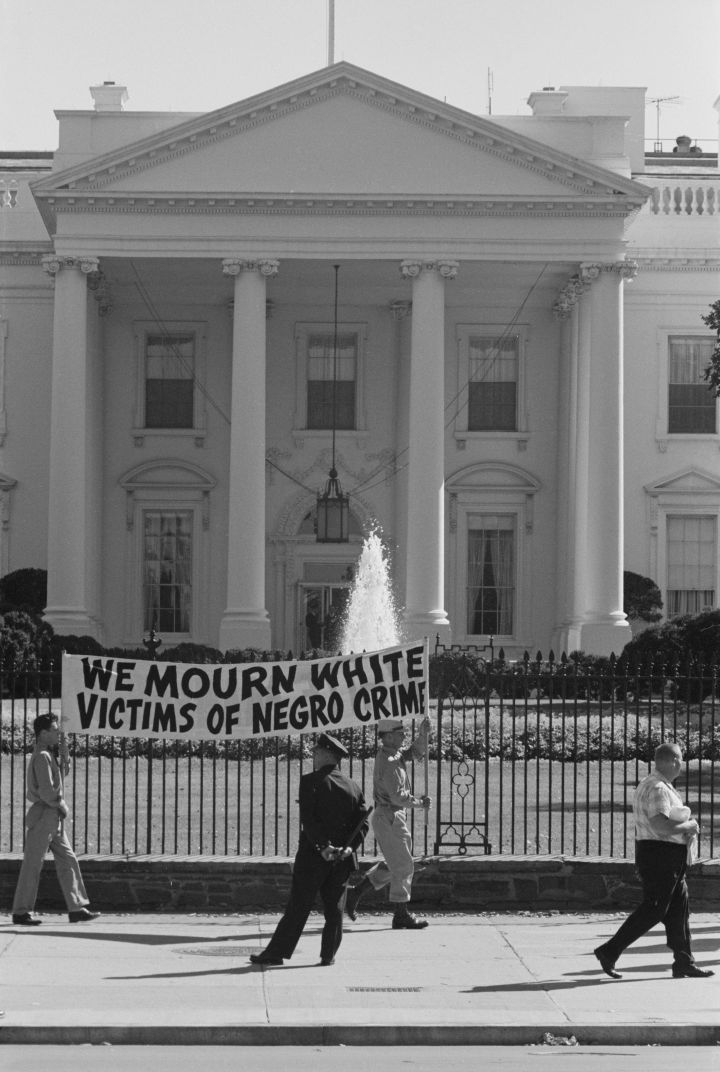 Source:Getty
Source:Getty
Two men march before the White House in Washington, DC, with a banner reading ‘We Mourn White Victims of Negro Crime’, September 1963. They are reacting to the protests against the bombing of the 16th Street Baptist Church in Birmingham, Alabama by white supremacists, in which four girls were killed. (Photo by Michael Ochs Archives/Getty Images)
58. Kelly Ingram Park
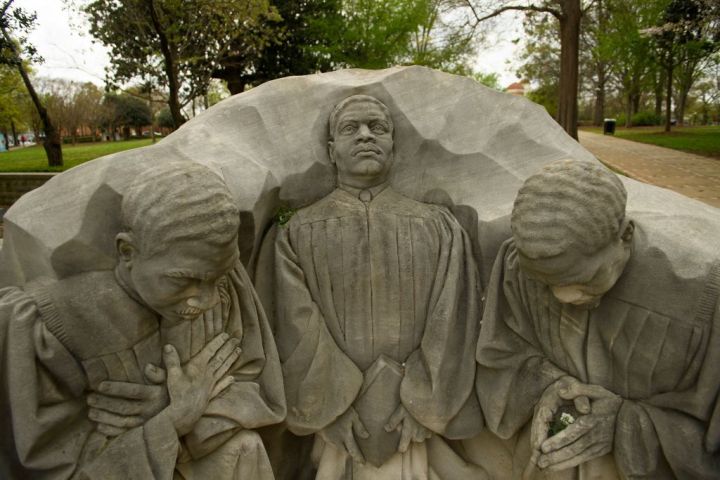 Source:Getty
Source:Getty
The kneeling ministers statue at Kelly Ingram Park, near the 16th Street Baptist Church, a Civil Rights historical site, as seen on March 27, 2021 in Birmingham, Alabama.
59. Shelby County A Decade Later: The Path Forward In Our Ongoing Fight For The Right To Vote
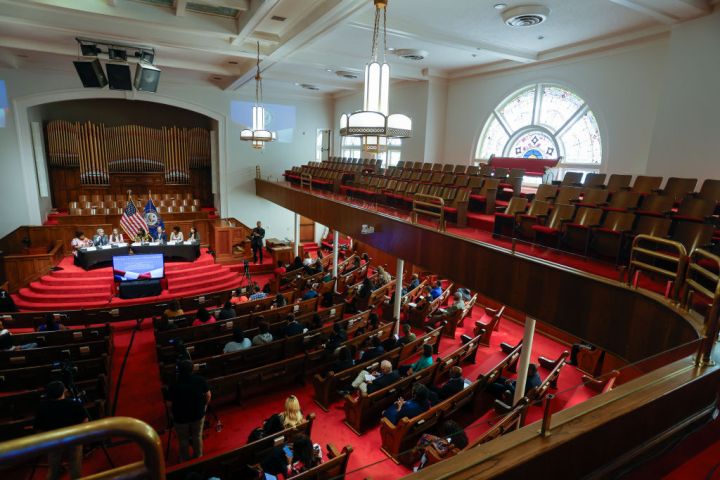 Source:Getty
Source:Getty
Rep. Terri Sewell (D-AL), panel center, convenes civil rights leaders at the 16th Street Baptist Church to strategize on a path forward for voting rights a decade after the Supreme Court’s Shelby County decision, on June 28, 2023 in Birmingham, Alabama.
60. Memorial At San Diego Museum Honors Black People Killed Due To Racial Injustice
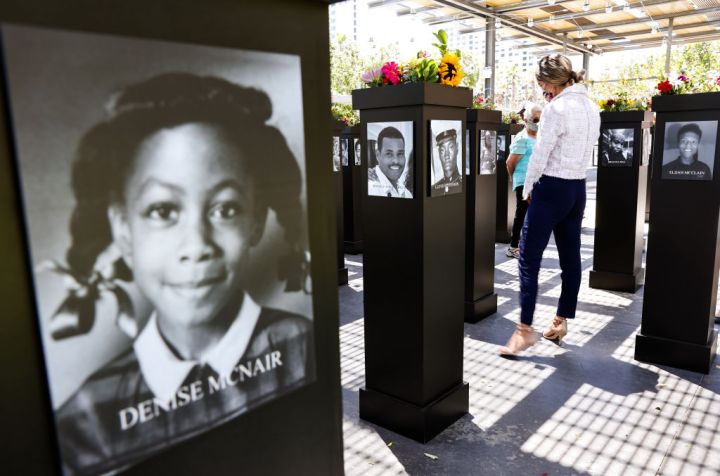 Source:Getty
Source:Getty
SAN DIEGO, CALIFORNIA – JULY 20: A visitor views the Say Their Names memorial exhibit at Martin Luther King Jr. Promenade on July 20, 2021 in San Diego, California. The traveling memorial is sponsored by the San Diego African American Museum of Fine Art (SDAAMFA) and features photographs of 200 Black Americans who lost their lives due to systemic racism and racial injustice. 11-year-old Denise McNair (PICTURED) was one of four Black girls killed in the KKK bombing of the 16th Street Baptist Church in 1963 in Birmingham.













